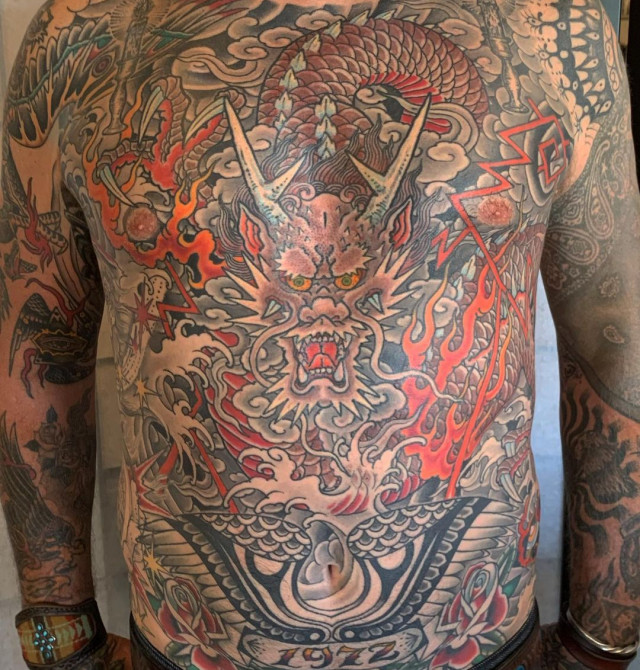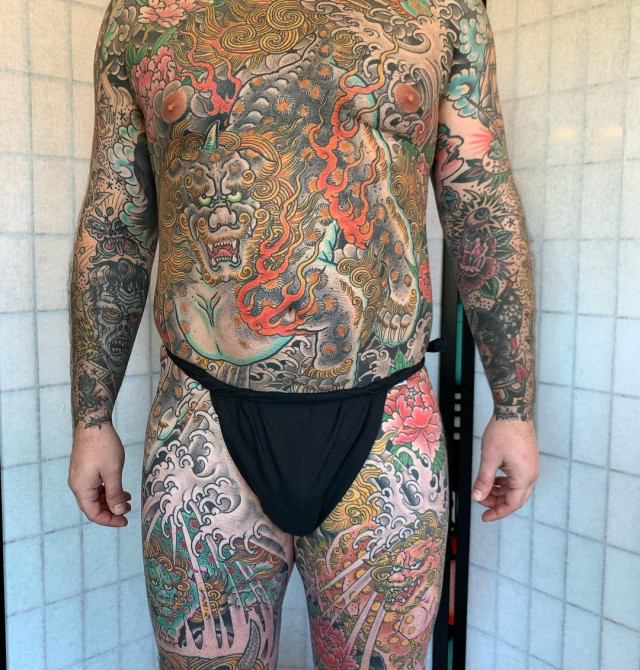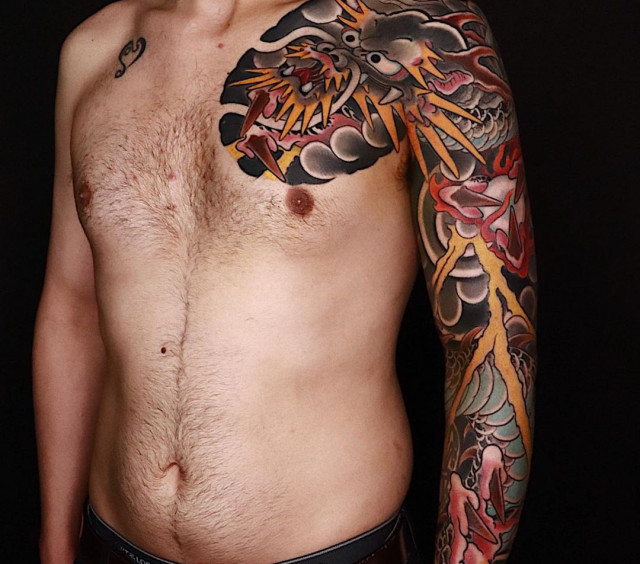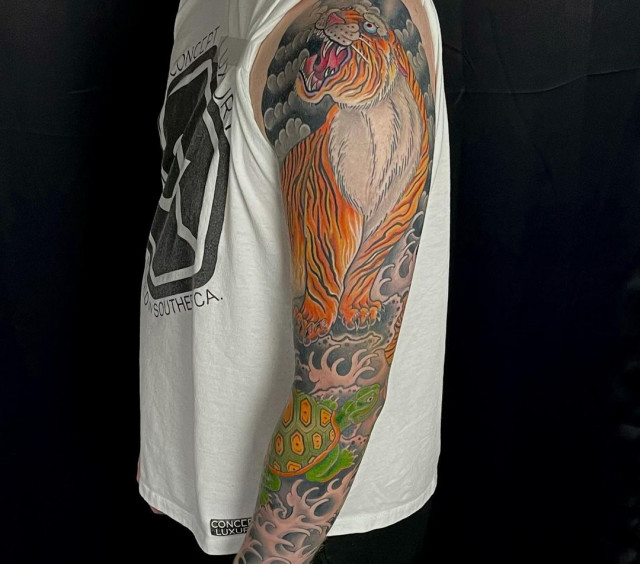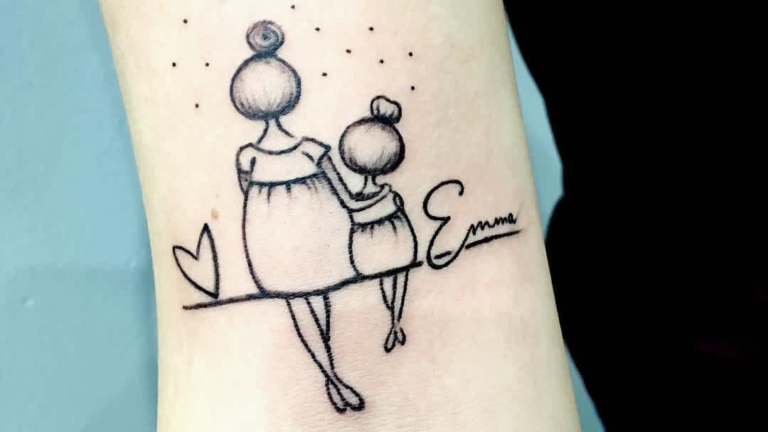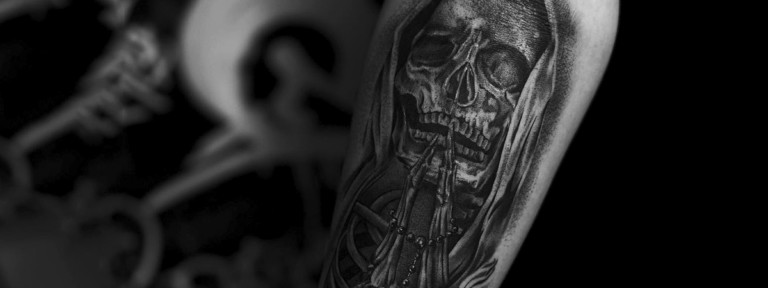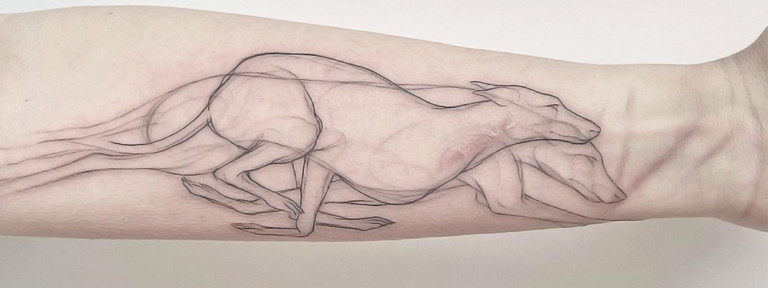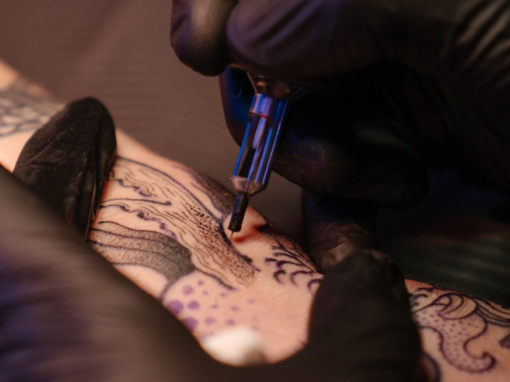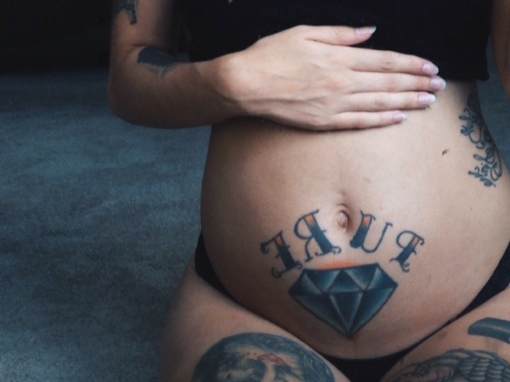Yakuza is an infamous Japanese mafia group. The most common association with them are large scale, detailed and bright tattoos that cover all body like a suit. If you are looking for inspiration for your next Japanese-style tattoo, this article is for you.
We will look at the most common symbols used for the Yakuza tattoo. We will dive into Japanese legends, traditions, and secret meanings for every symbol. Get ready to be inspired.
What is a yakuza tattoo?
Yakuza tattoo is also called irezumi. It covers the entire body and includes a lot of hidden senses and symbolism in each element.
Yakuza members get tattooed by the horishi artist, who creates designs and inks by hand. Traditionally, horishi artist uses wooden handles and metal needles attached via silk thread and special ink. The inking process is usually long and painful. Yakuza believe that a larger and more painful tattooing process represents the commitment to the gang.
Modern artists usually use tattoo machines to the process faster and more precise. Finding a real irezumi artist who practices the traditional way of tattooing is a tough task because they are secretive in their work.
| Yakuza tattoo traditions | Western tattoo traditions | |
| Technique | Traditionally metal needles bounded to wooden sticks. However, most modern artists use tattoo machines | Tattoo machine |
| Frequent motifs | Has deep meaning in symbolism in Japanese culture and mythology | Tattoo elements are usually selected according to personal preferences and associations |
| Demonstration culture | Tattoos should be hidden under clothes in public | People enjoy demonstrating their tattoos |
| Size | Large-scale tattoos, often bodysuits | Come in any size |
| Customization | Usually, the bodysuit is fully customized according to customer requests | There are ready-to-use templates as well as newly created designs for a client |
Brief History of Yakuza Tattoo
The history of the Yakuza dated back to the early 17th century, but the real origin of the gangs is still unknown.
Yakuza gang probably originates from the lowest class of Japanese society – burakumin.
Many of the burakumin people were criminals, who formed gangs. Selling stolen and scammed goods and operating illegal gambling was the zone of responsibility of these groups, which then formed the Yakuza.

Back in time, tattoos were used as a punishment for criminals in Japan. They were placed in visible places to show everyone and keep society from interacting with outlaws.
During this period Yakuza developed their own system of inking called irezumi. It was a way to show a rebellion against the official government and the discrimination people in low classes face.
Nowadays, Yakuza run criminal businesses all around Japan. Gang members live according to their own ethical code full of dignity and justice.
Even though it is legally to get a tattoo in Japan, there is a stigma against it. Many people associate tattoos with the criminal world. Ordinary people, as well as yakuza members, get tattoos on the upper limbs, back, chest, abdomen, and legs, so it is easy to hide wearing pants and long sleeves.
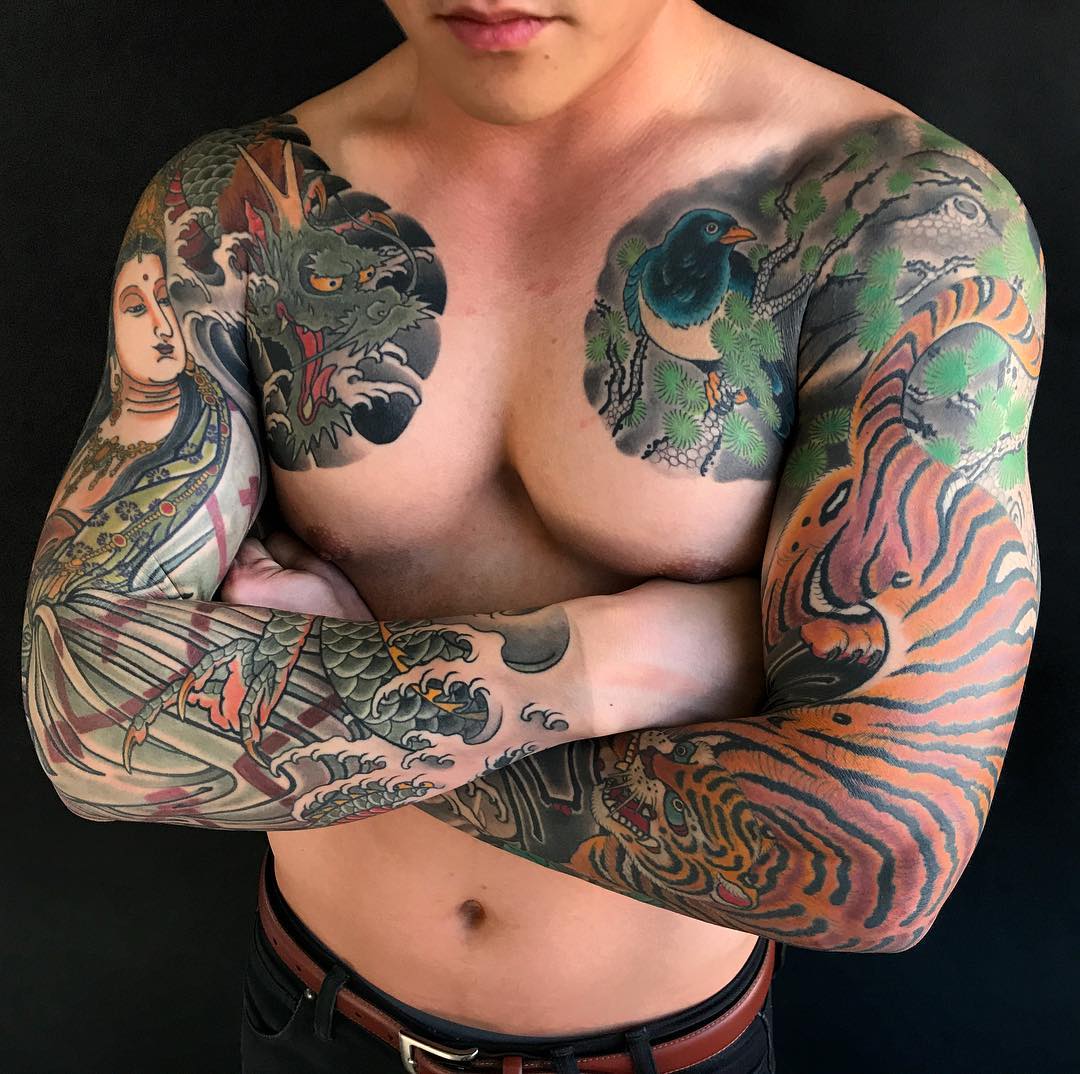
Design Ideas and Symbolism of Yakuza Tattoos
Dragon
Dragons were part of Japanese culture for centuries originating as far back as 680 A.D. Compared to Western mythology in Japan dragons are good symbols. They are associated with wisdom, strength, and protection. Dragons are responsible to control water. Depending on the color the symbolism may vary:
- Black color has an association with wisdom and ancestors.
- Golden symbolizes great person attributes like wisdom and kindness.
- Yellow represents nobility and helpfulness.
- Blue means respect, forgiveness, and diligence in work.
- Green is associated with earth and nature.
Artist: Ben Siebert

Artist: Omar Morales-Sanchez
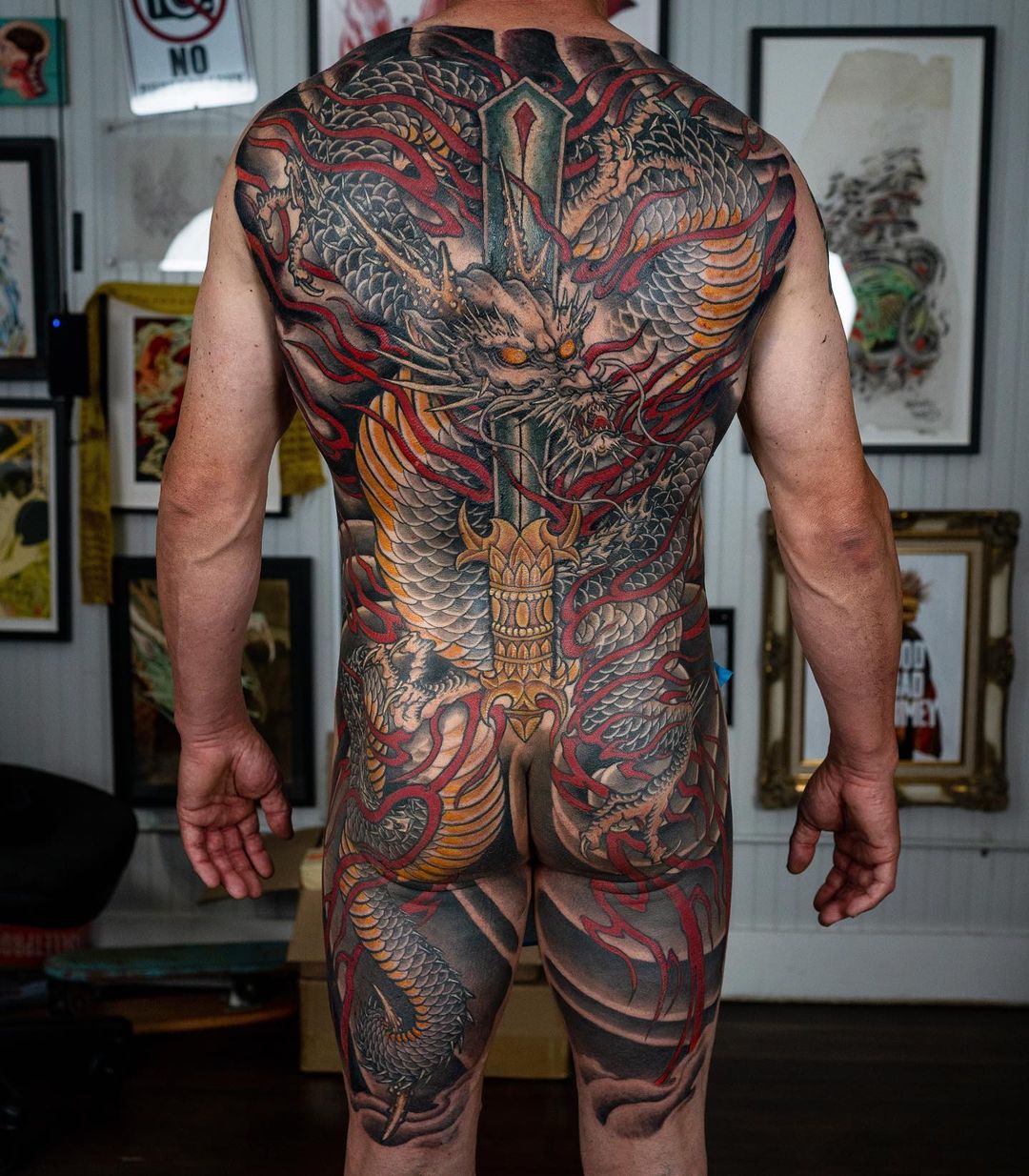
Tiger
Tiger in Japanese culture has a great deal of meaning like strength, courage, and protection. It was adopted from the Chinese culture and according to the myths, it controls winds.
The white tiger tattoo represents a Japanese tiger Byakko. He is a king of the beasts and represents righteousness.
Tiger is sometimes combined with the dragon. In Japan, it is a common symbol of yin and yang that creates our universe. Tiger represents yin, he lives on the ground and his power is quiet and accumulates in the string muscles. The dragon stands for yang, it has active energy that causes rain clouds to swirl and waves to form. Both form a perfect balance of forces.
Artist: Mark Thompson
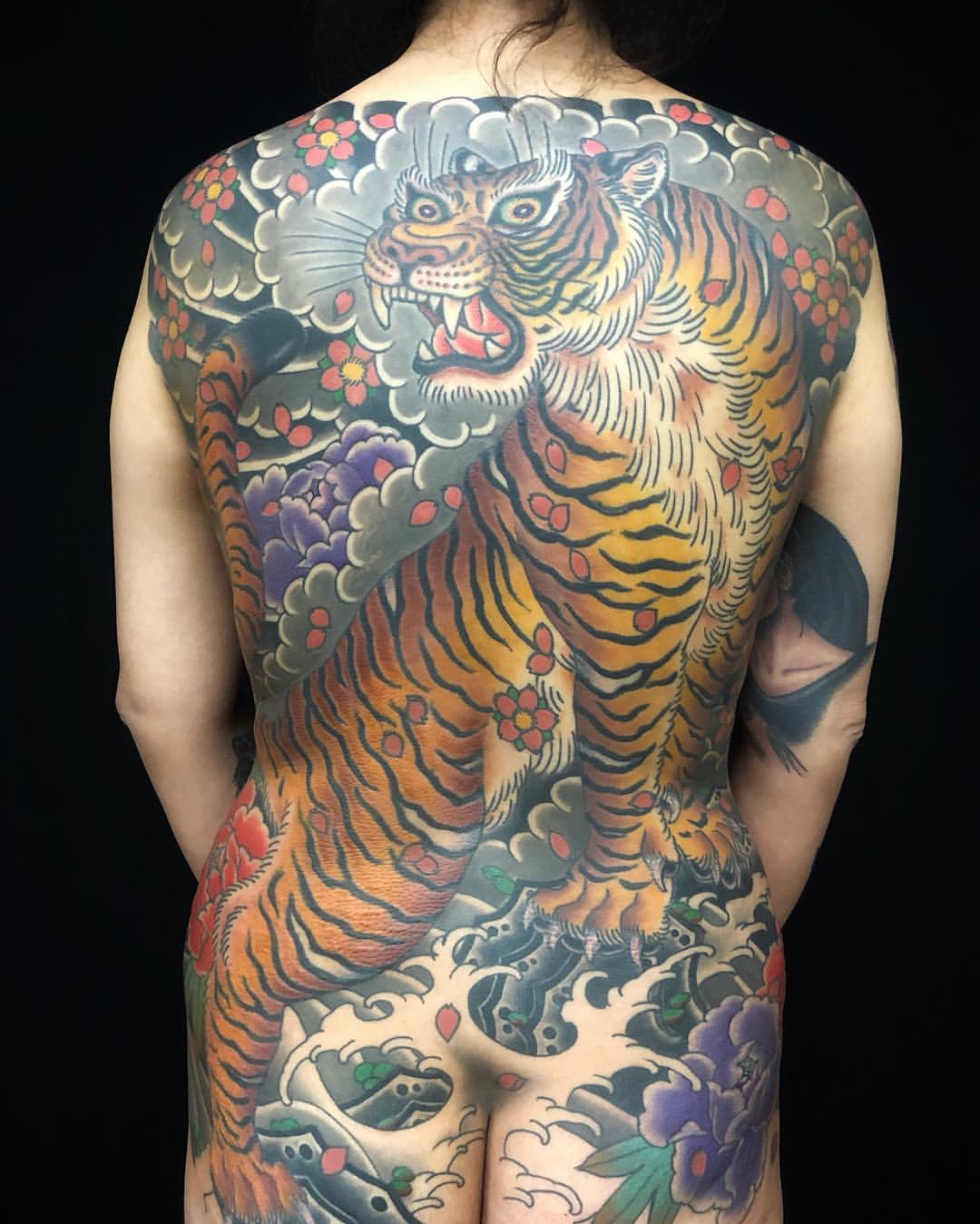
Koi Fish
Koi fish in the yakuza tattoo stands for luck, protection, good fortune, strength, and perseverance. Koi fish can adapt to many climate and water conditions. According to the legends, it swim upstream and climbed on the top of the waterfall to become a dragon. In Japan, these fish are also seen as brave samurai warriors.
As same as with the dragon, the meaning of the tattoo can vary depending on the color:
? Black stands for transformation and overcoming obstacles on your way. It is also a symbol of a father.
? Red symbolize energy and passionate love as well as a mother.
? Blue means masculinity, virility, and fertility. It is connected to the first son.
? Silver is associated with wealth and business.
? Gold represents prosperity, wealth, and fortune.
? White is a symbol of career success.
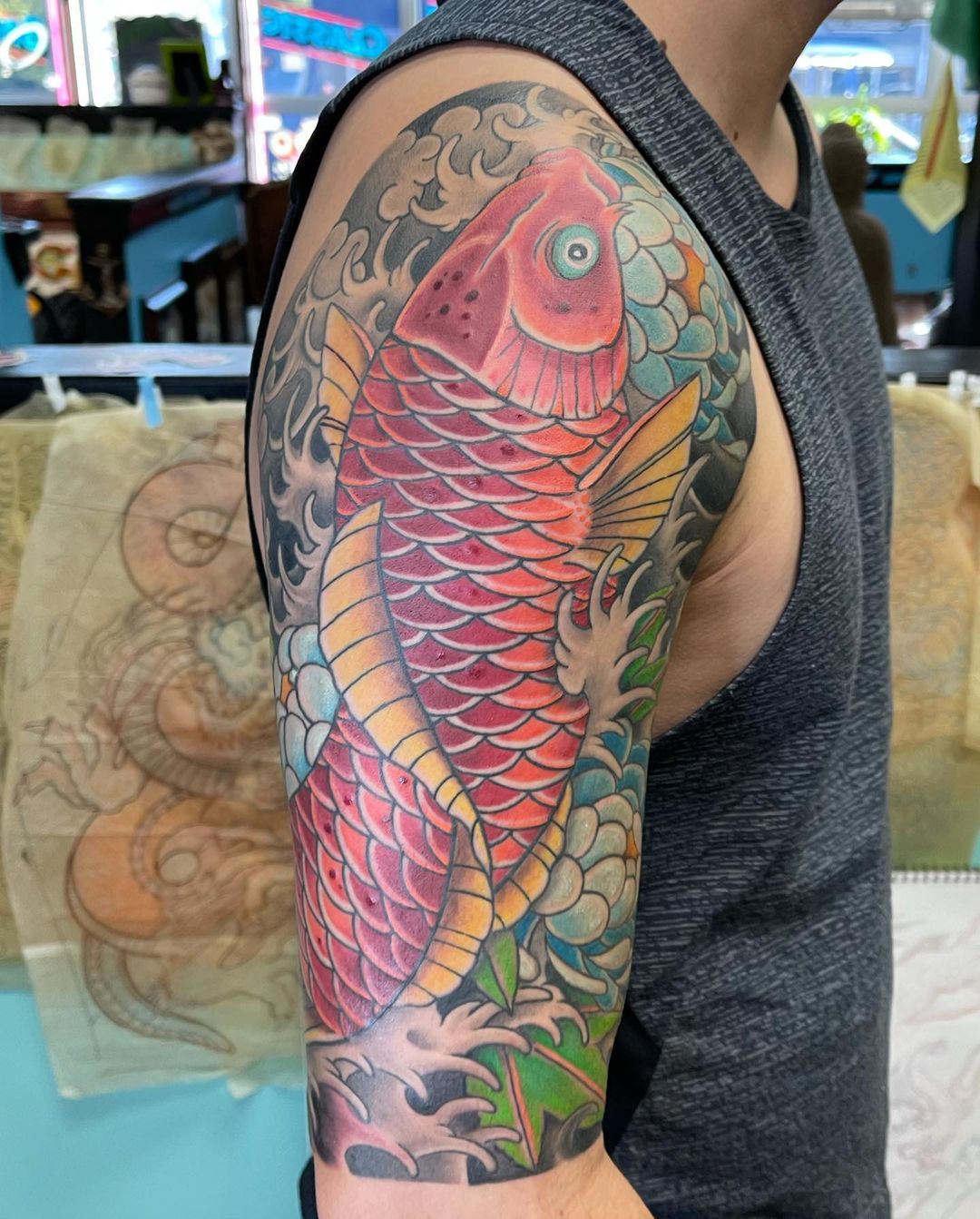
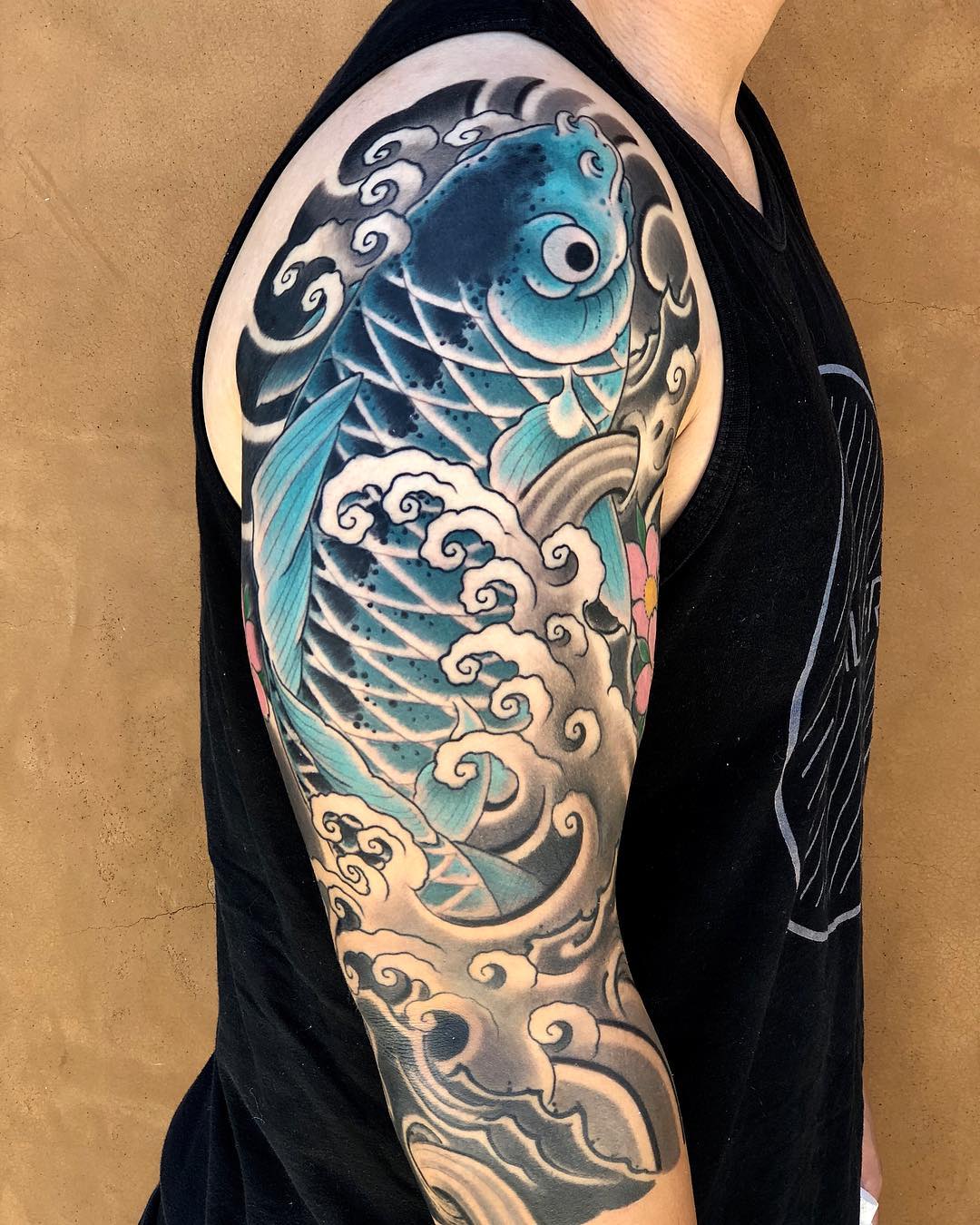
Cherry Blossom
Cherry blossom or sakura has a deep meaning in Japanese culture. It is an embodiment of beauty and mortality, which becomes a symbol for the samurai. They have a strict moral code and honor. One of the samurais’ virtue is the appreciation of the inevitable death. It was an honor for them to die on the battlefield.
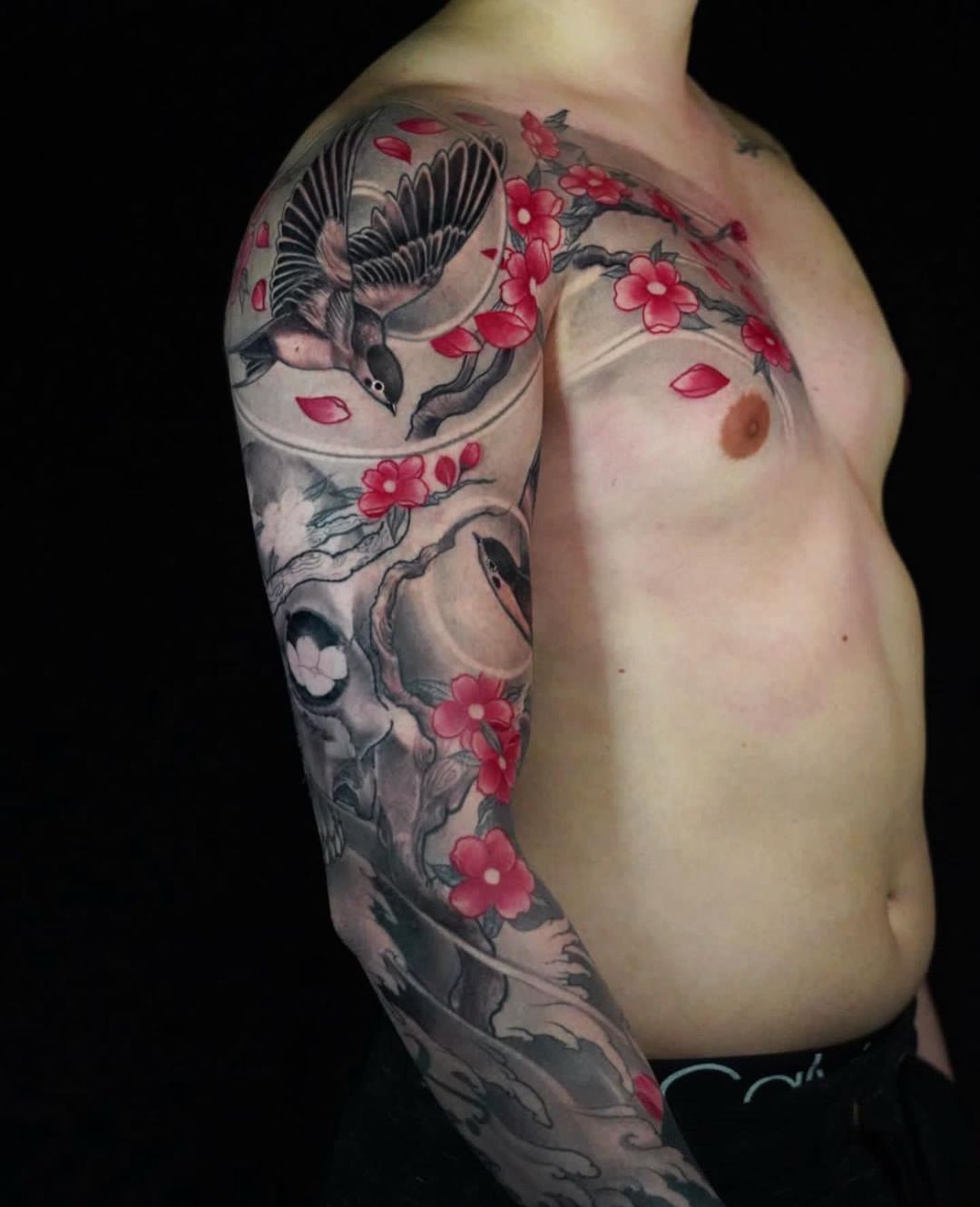
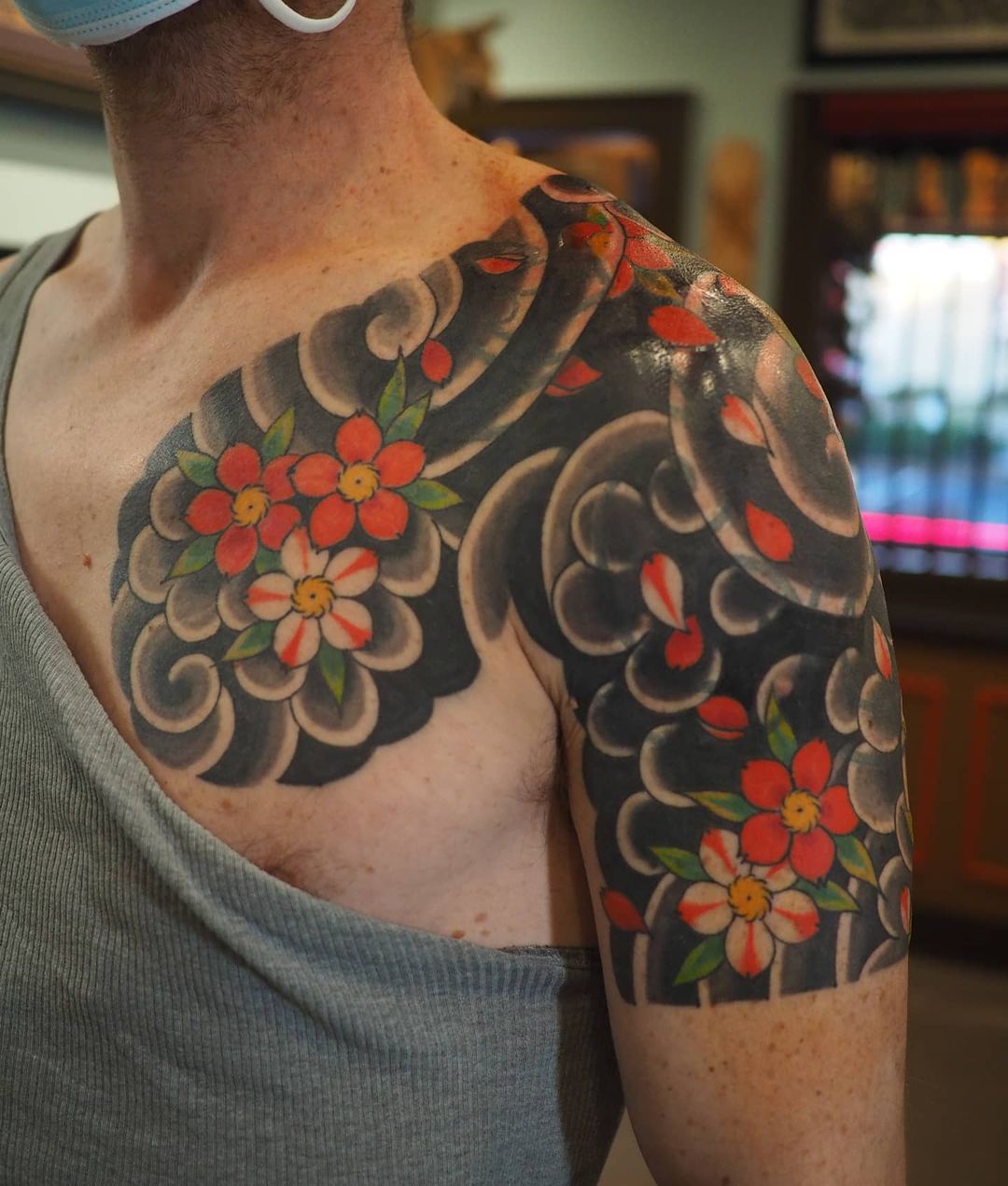
Hannya
Hanny is a common mask in the traditional Noh theater. Depending on the looking angle the mask can express both anger and pain. It represents strong emotions of rage and sorrow that seized betrayed woman.
According to the legend, the Prince’s mistress named Lady Rokujo was betrayed and ignored by Price after his wife got pregnant. Lady Rokujo was overwhelmed with jealousy and anger so she turned into a demon to kill the prince’s wife.
Regardless of its scary appearance, in Japanese the word “hannya” means “wisdom” and the mask stands for good luck. It is also a symbol of passionate love.
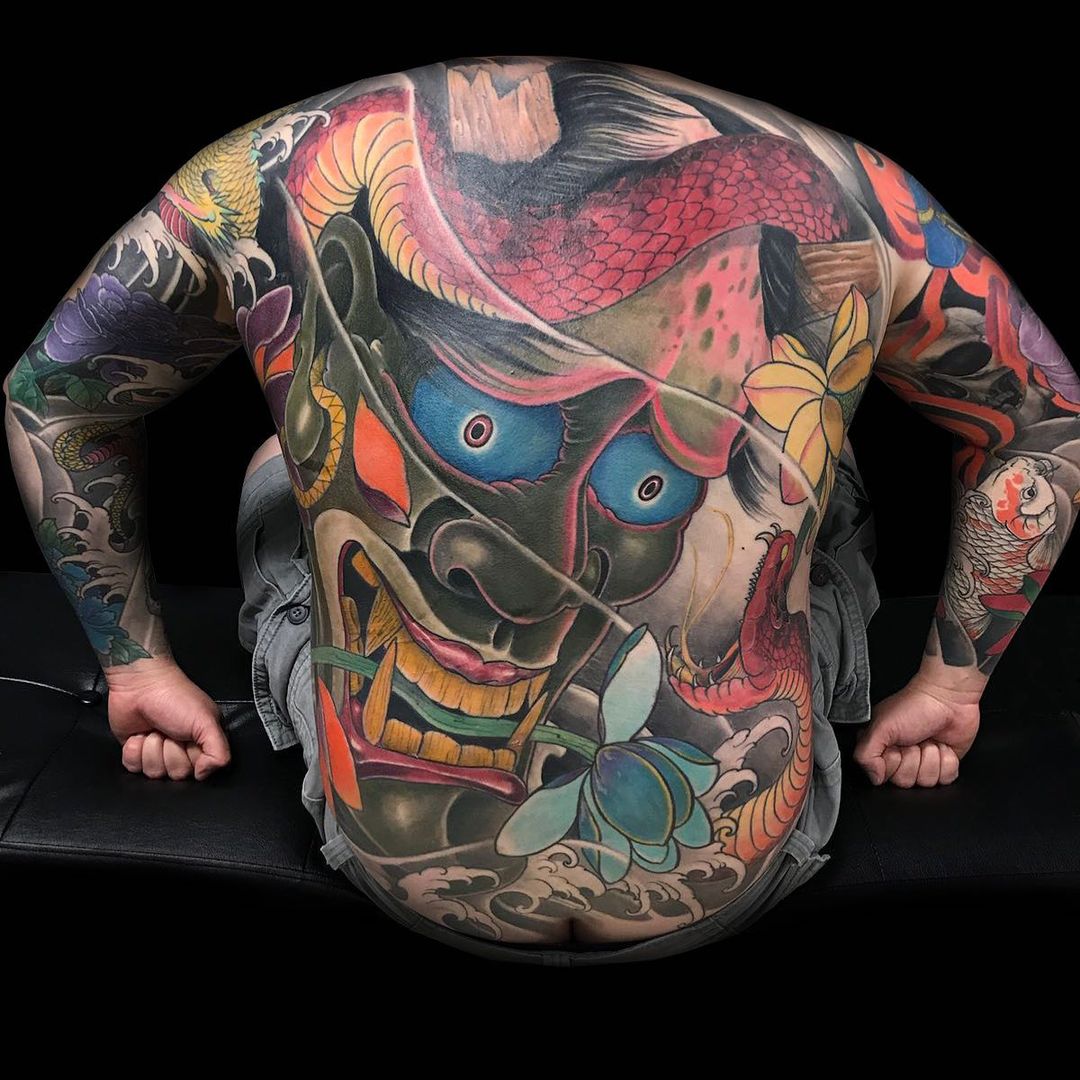
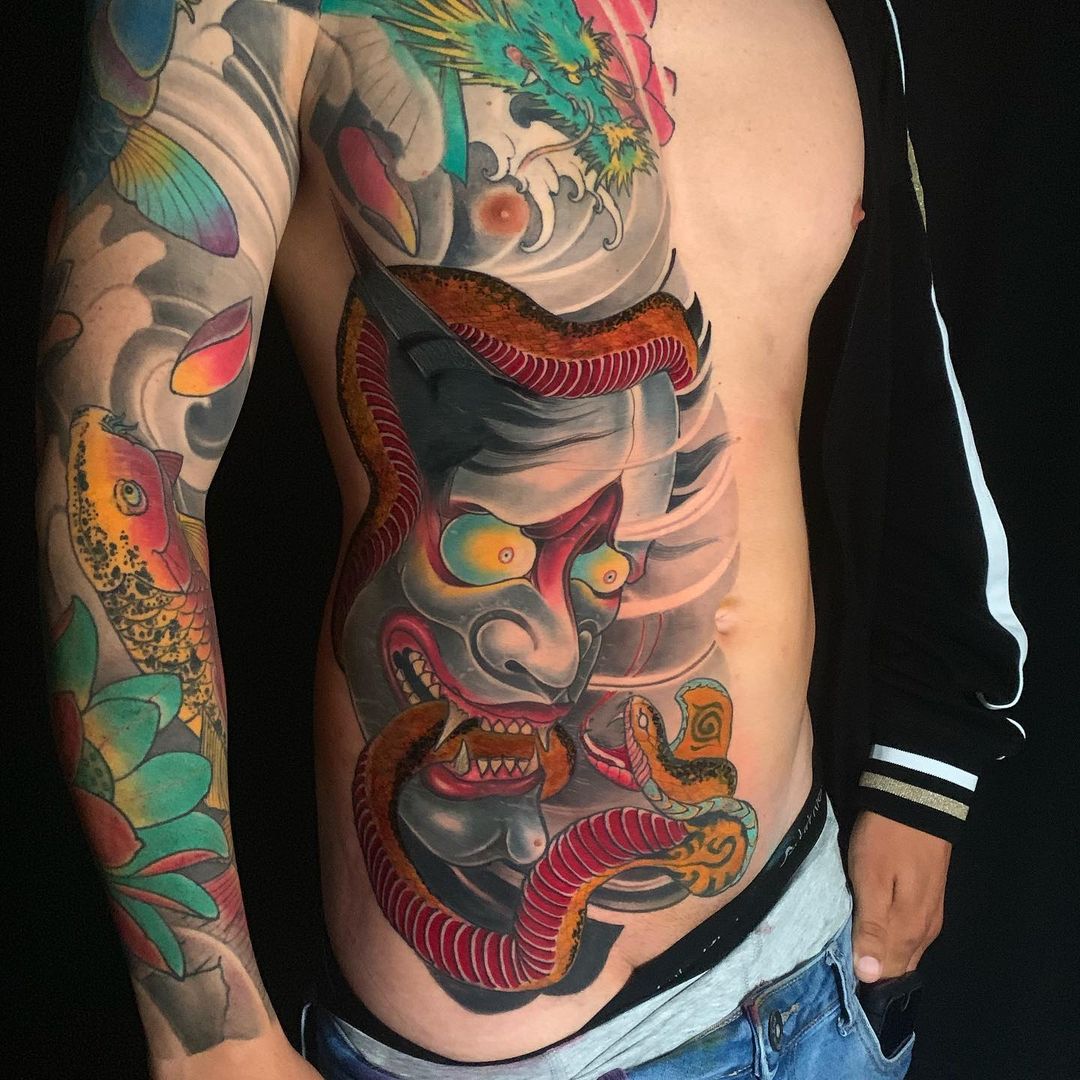
Peony
The peony is a “King of flowers” in Japanese culture. They are elegant, and beautiful, and represent good fortune, bravery, and honor.

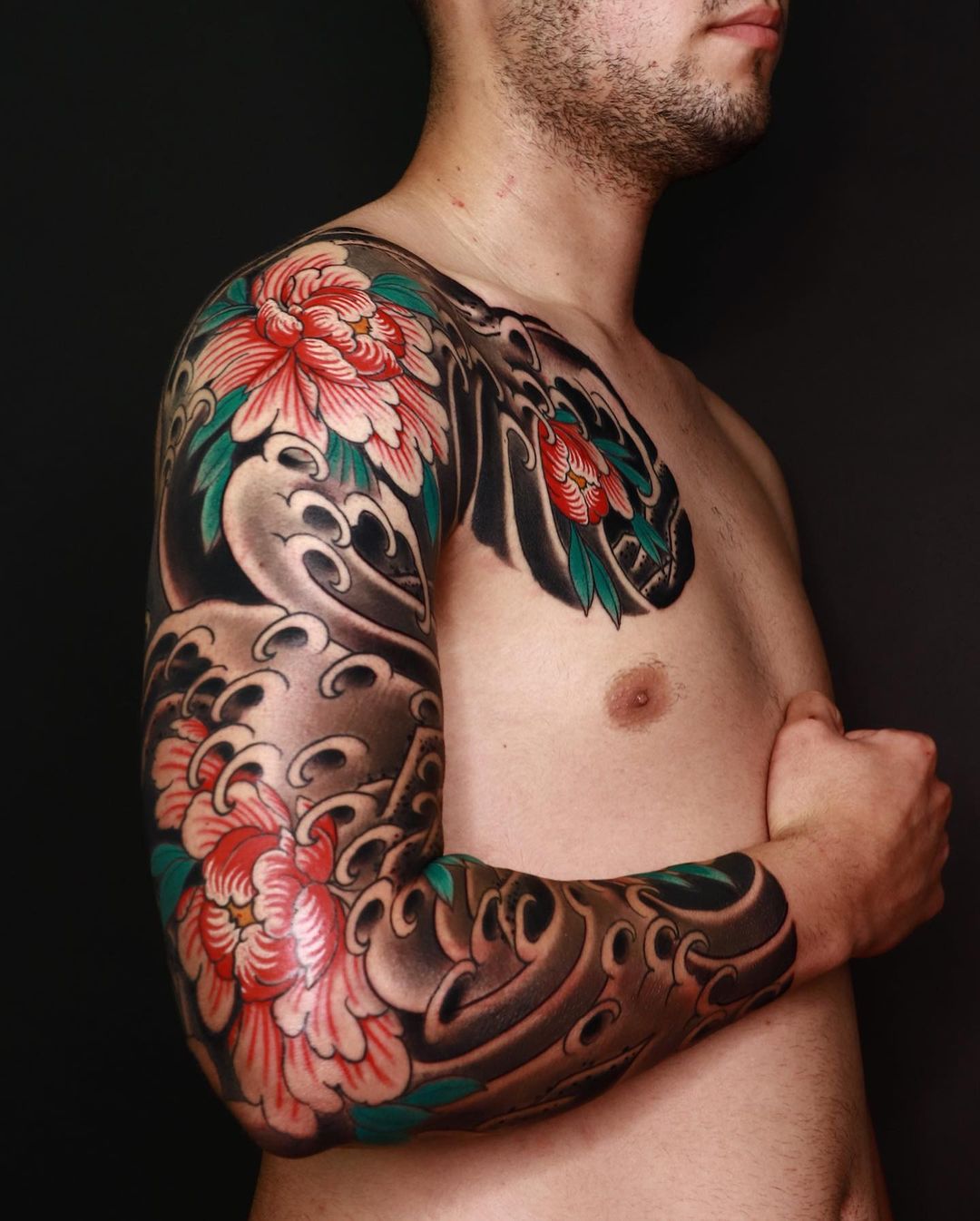

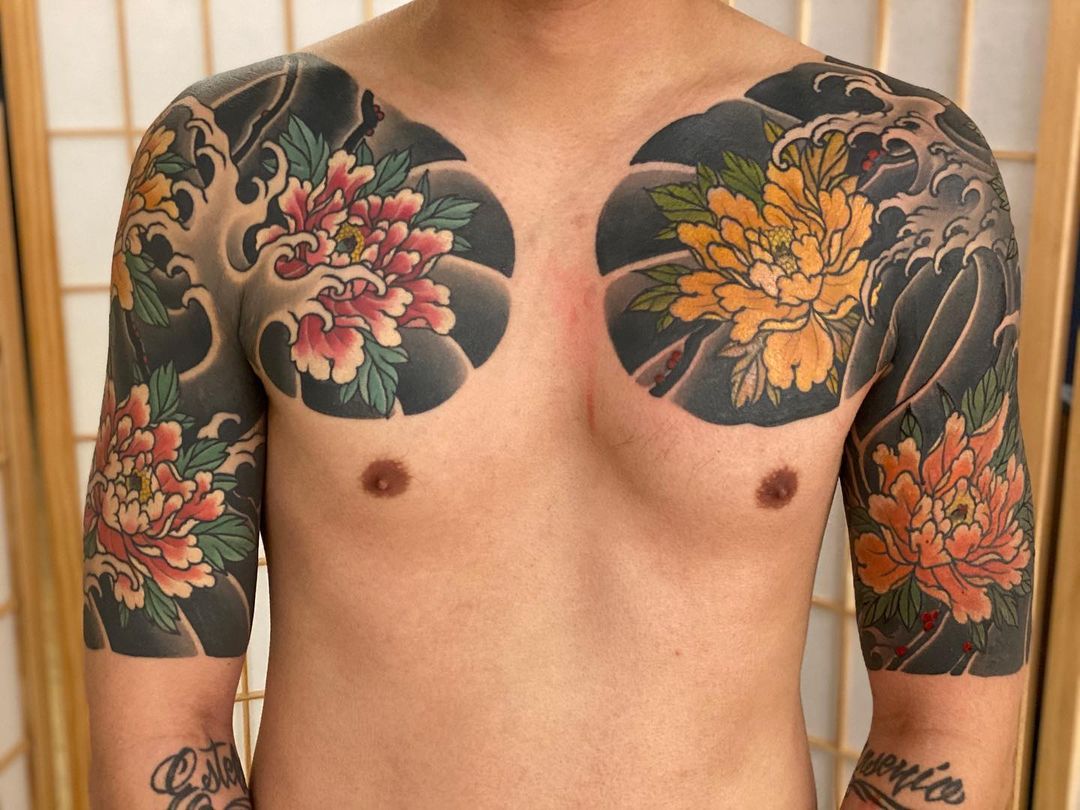
Maple Leaf
Maple leaves appear in Japanese art throughout its long history. It is associated with balance, peace, and beauty. Maple leaves in Japanese are called “kito” which means “calm,” “rest” or “at peace.”


Chrysanthemum
Is a symbol of the Emperor and the Imperial family. It represents longevity, rejuvenation, and nobility in Japan.
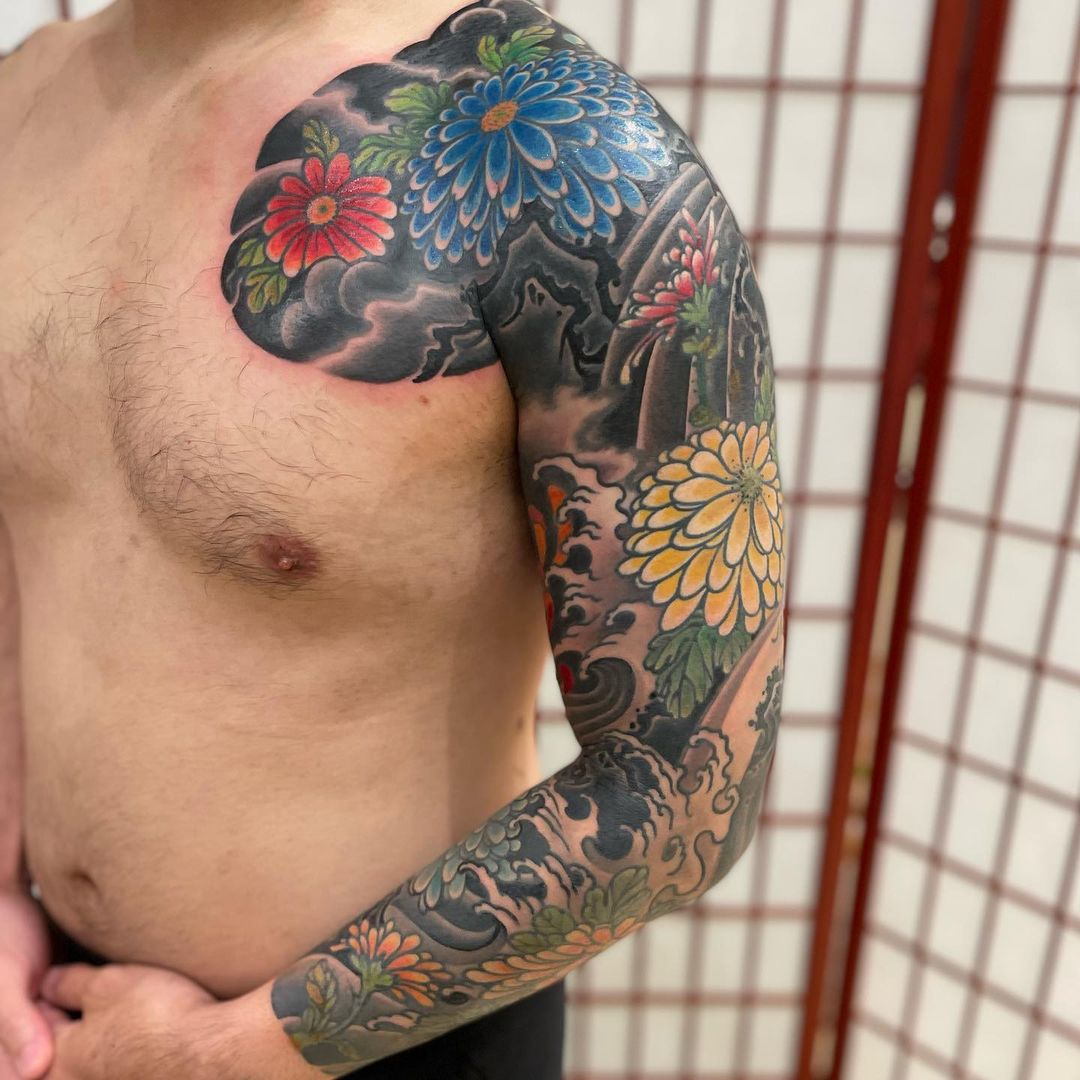
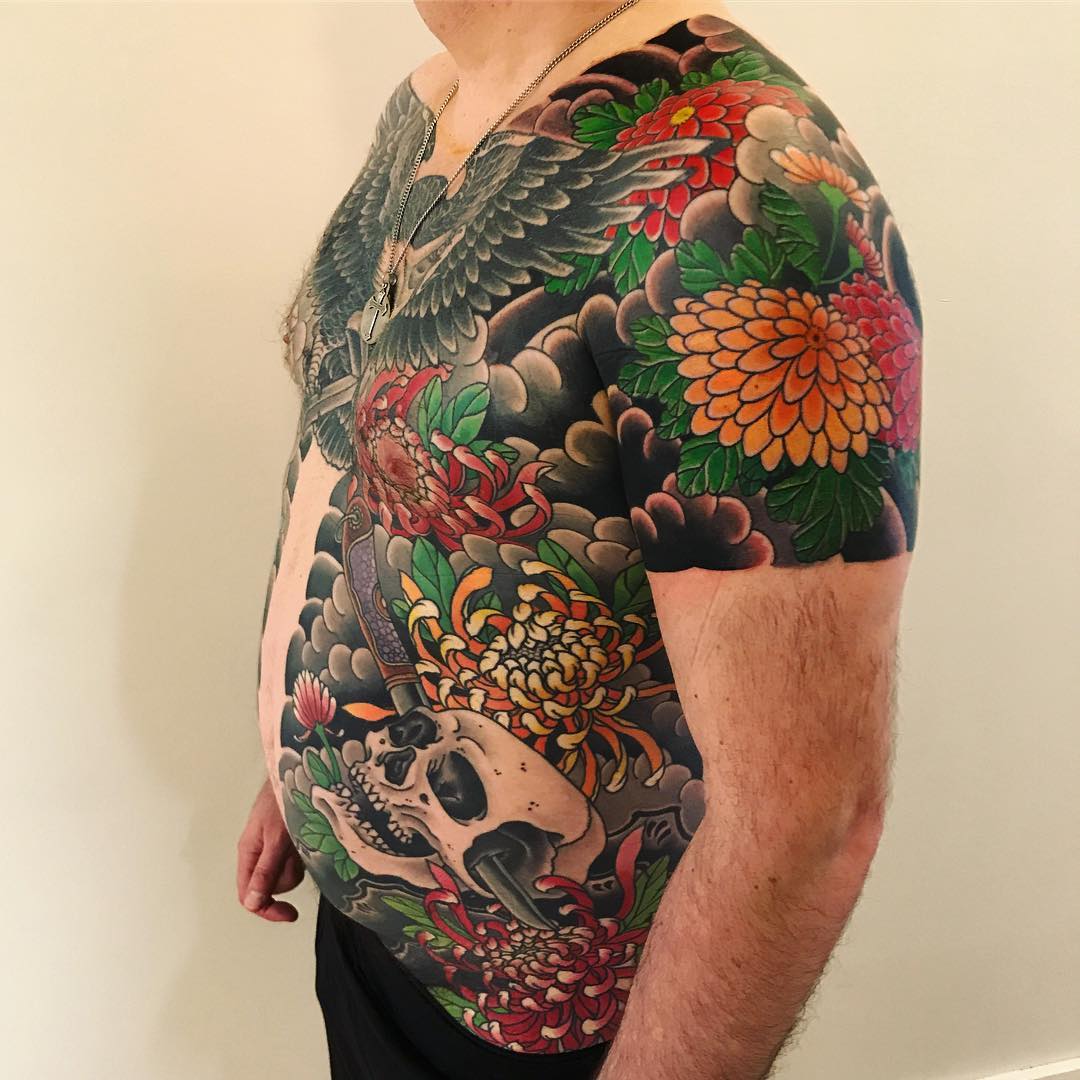
Severed Head (Namakubi)
Namakubi is a brutal tattoo choice. It depicts the final moment of the seppuku or harakiri ritual. The process consists of two stages. In the first one, the samurai insert a knife deep into his abdomen. On the second another samurai completes decapitation. Seppuku procedure is either a voluntary honorable samurai’s death or punishment for serious offenses.
This tattoo means virtue, strength, and dignity. It is connected to the high ideals samurais had in the past.

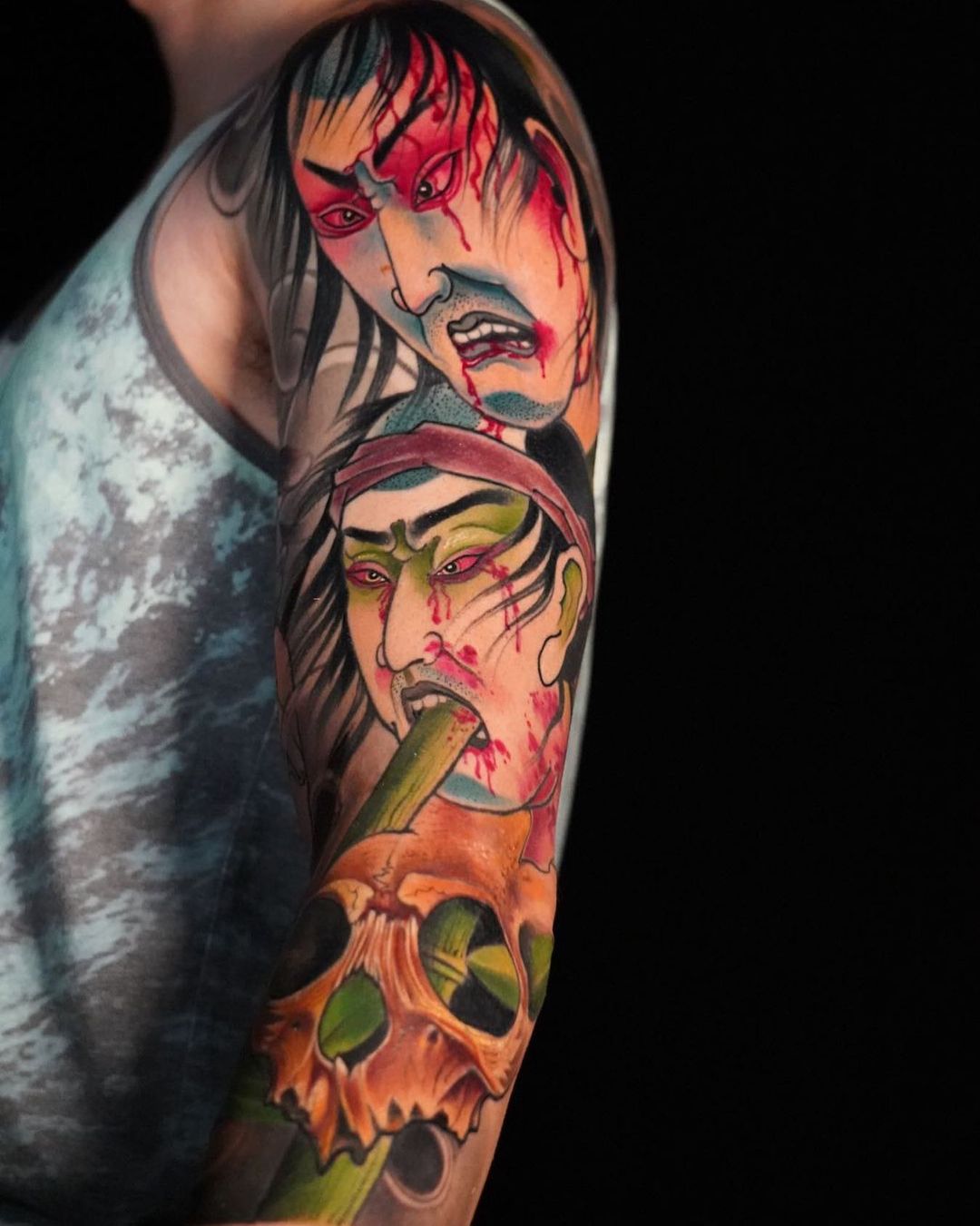
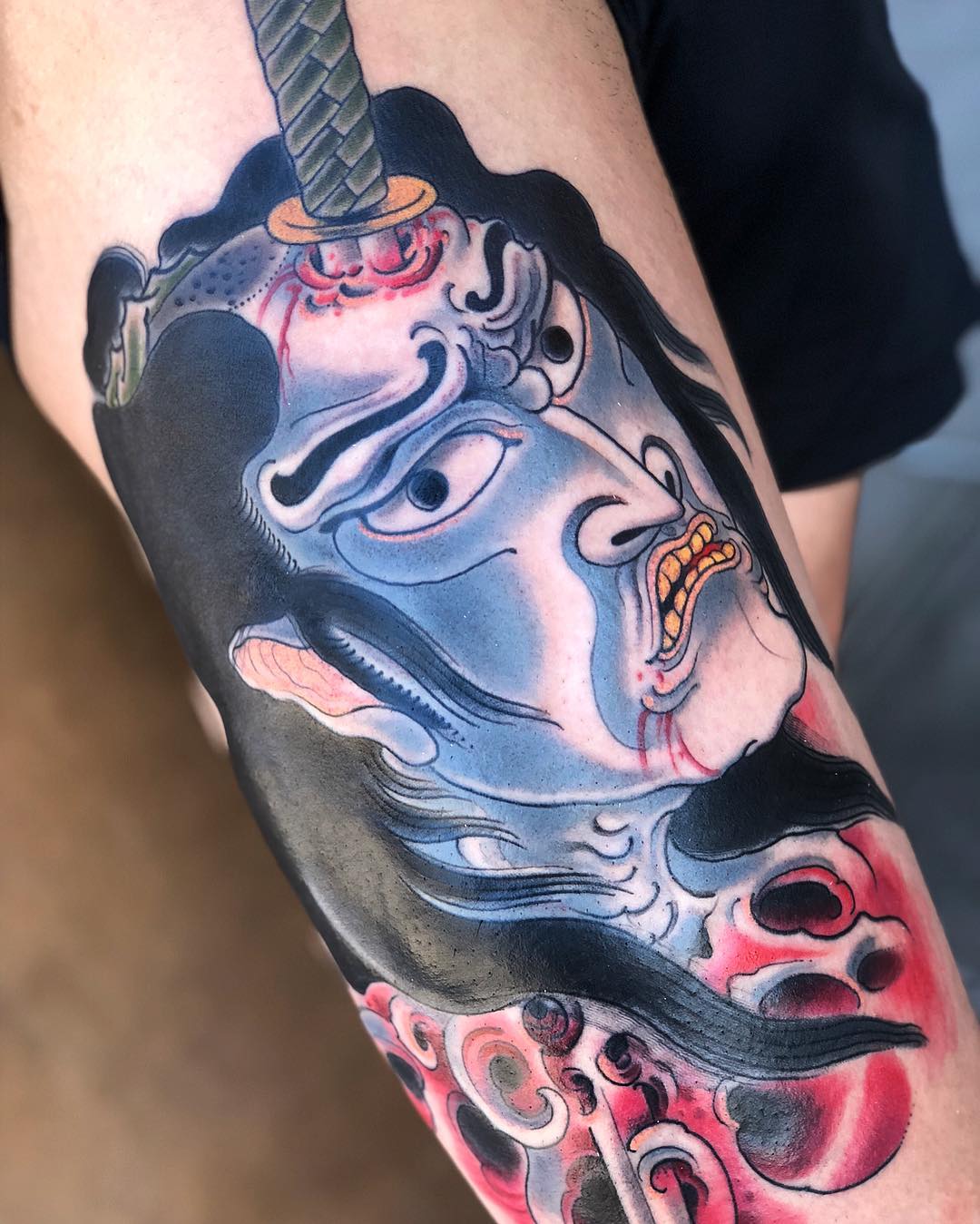
Legend Character
For the yakuza tattoo, it is common to depict some legendary characters on the body. Below we describe the most interesting and popular heroes.
- Jiraya is a protagonist of folk stories. He rides the toad and can use magic to transform it into a gigantic toad.
- Kintarō or a Golden Biy is a folk hero child with superhuman strength. He could crash the rocks, beat demons and monsters, and fight giant animals.
- Fudo Myoo is also known as Immovable One. He is one of the Five Bright Kings in Japanese Buddhism and represents solidarity, strength, and unwavering principles. It is believed that he is a symbol of good luck.
- Oniwaka Maru is a child name of the folk Japanese warrior monk, Benkei. He represents a man of great strength and loyalty. He is commonly depicted in a revenge fight with giant carp that killed his mother.
- The kitsune mask is a fox mask usually used during festivals. Wearing this mask is believed to bring happiness, good luck, and protection. In Japanese folklore, the fox acts like a guardian, a signs of prosperity, and intelligence.
- Tengu is a mask that is used for Noh stage plays that represents a powerful creature from Japanese folklore. Its mask is used as a symbol of protection from evil spirits.
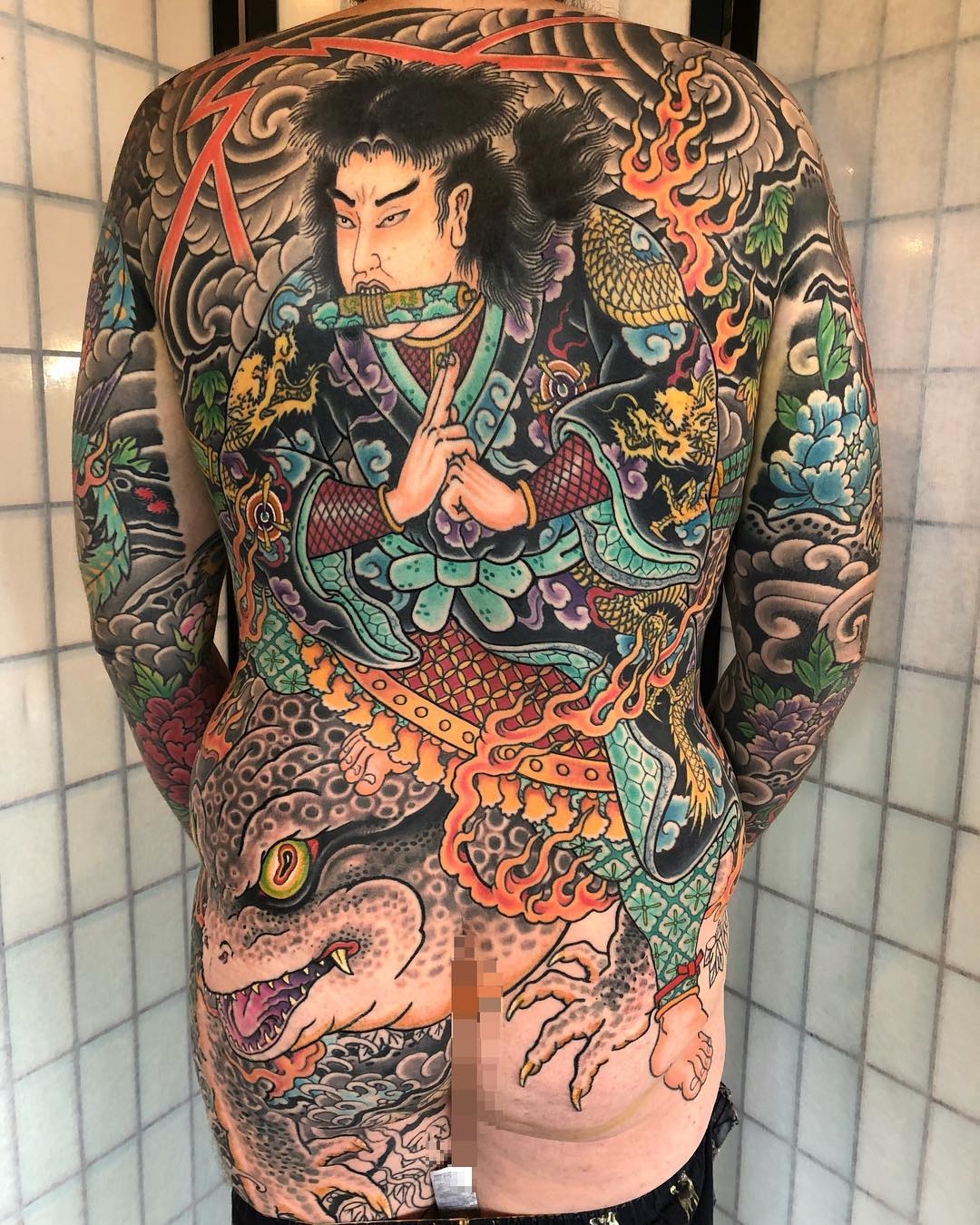
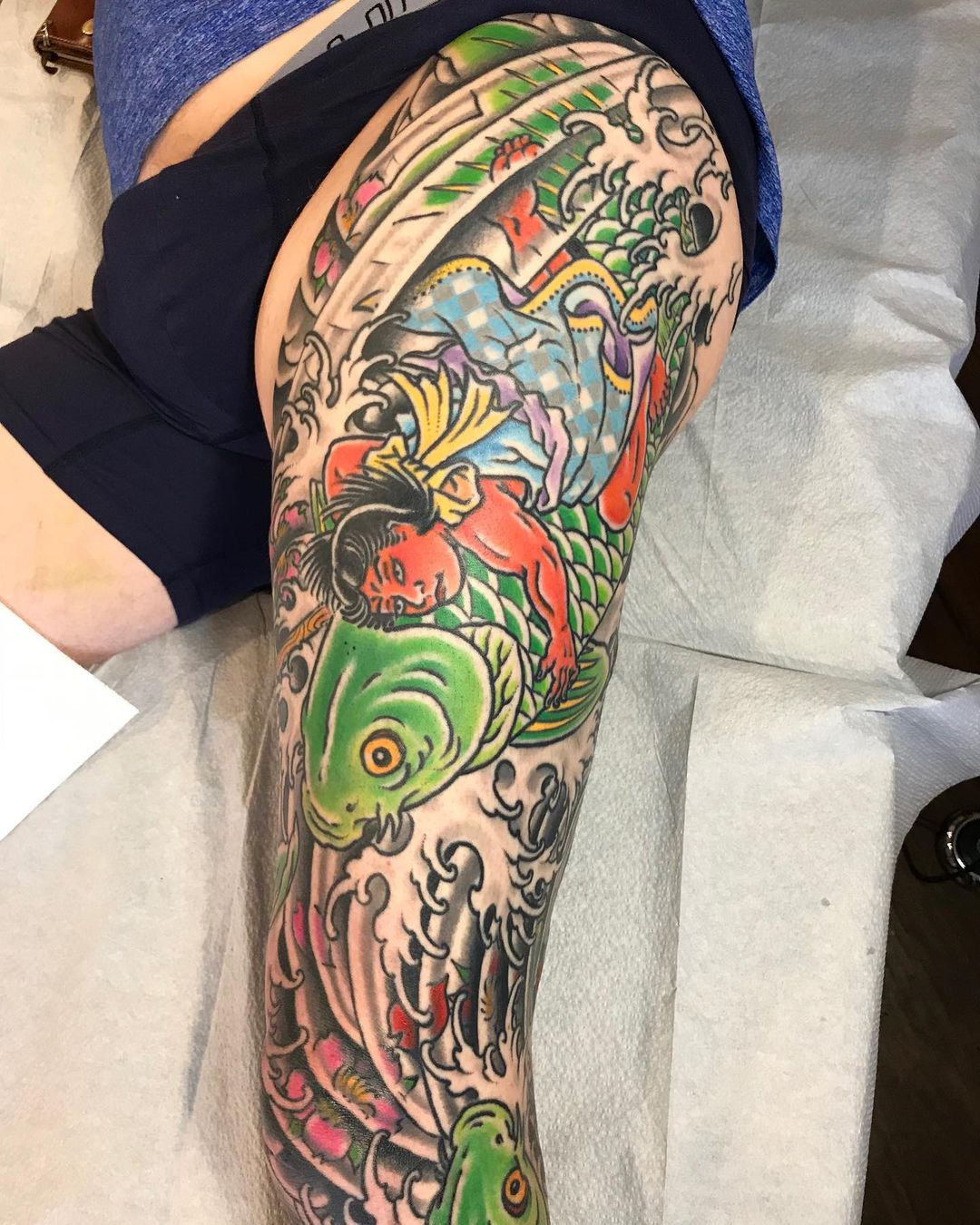
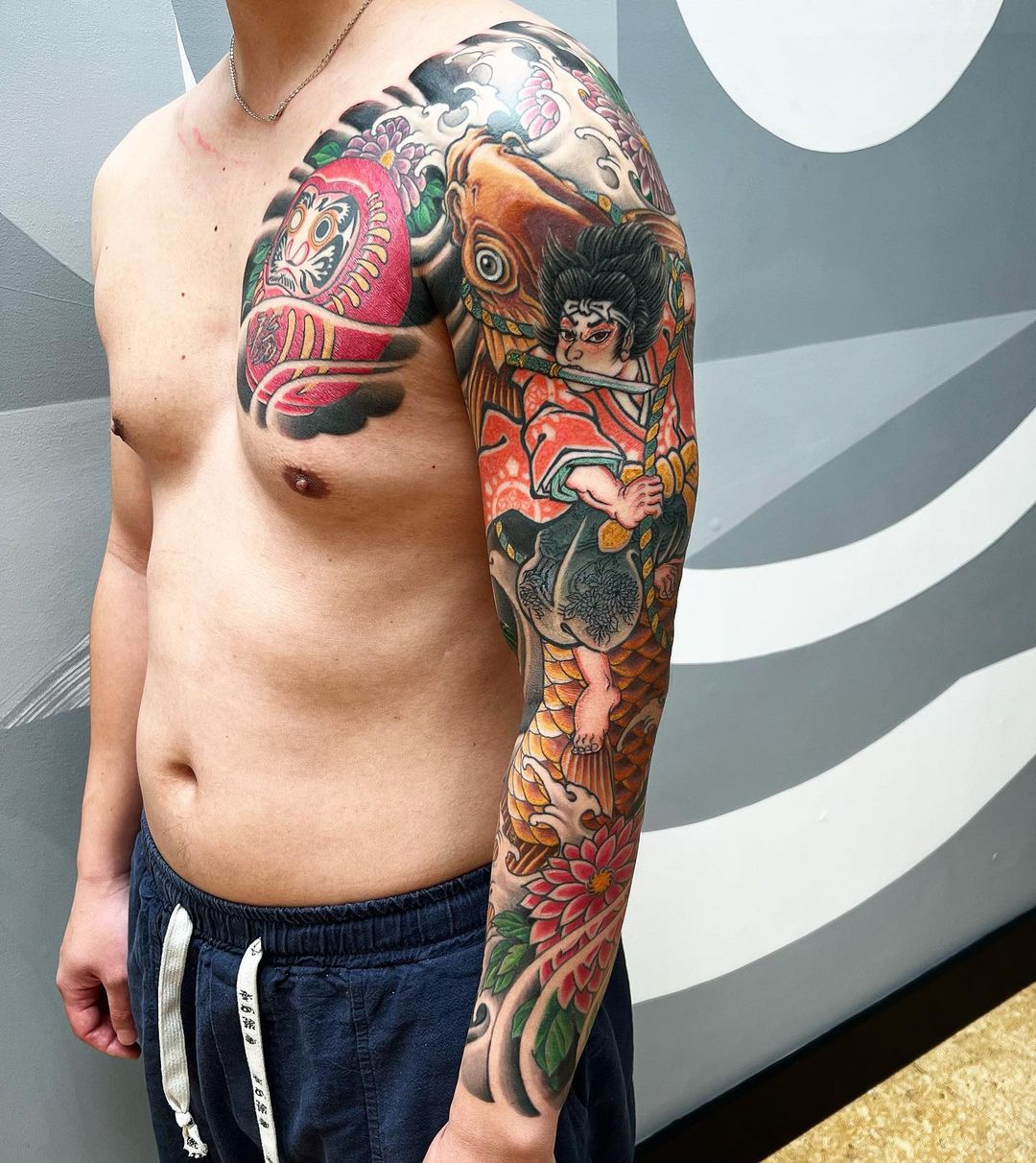
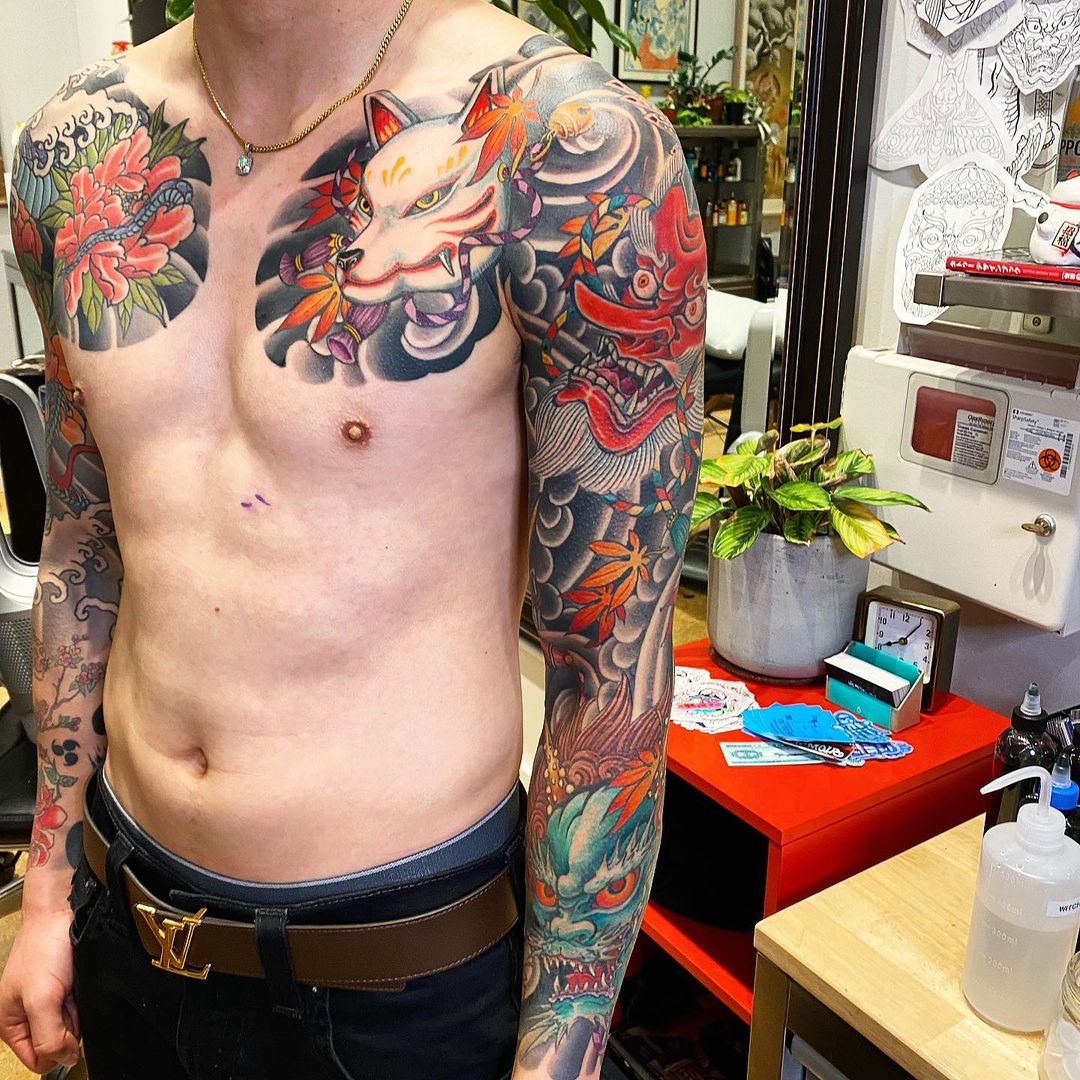
Snake
Compared to Western countries, snake or Hebi in Japanese has positive associations. It is a symbol of good luck, rebirth, change, protection from illness, and wisdom.
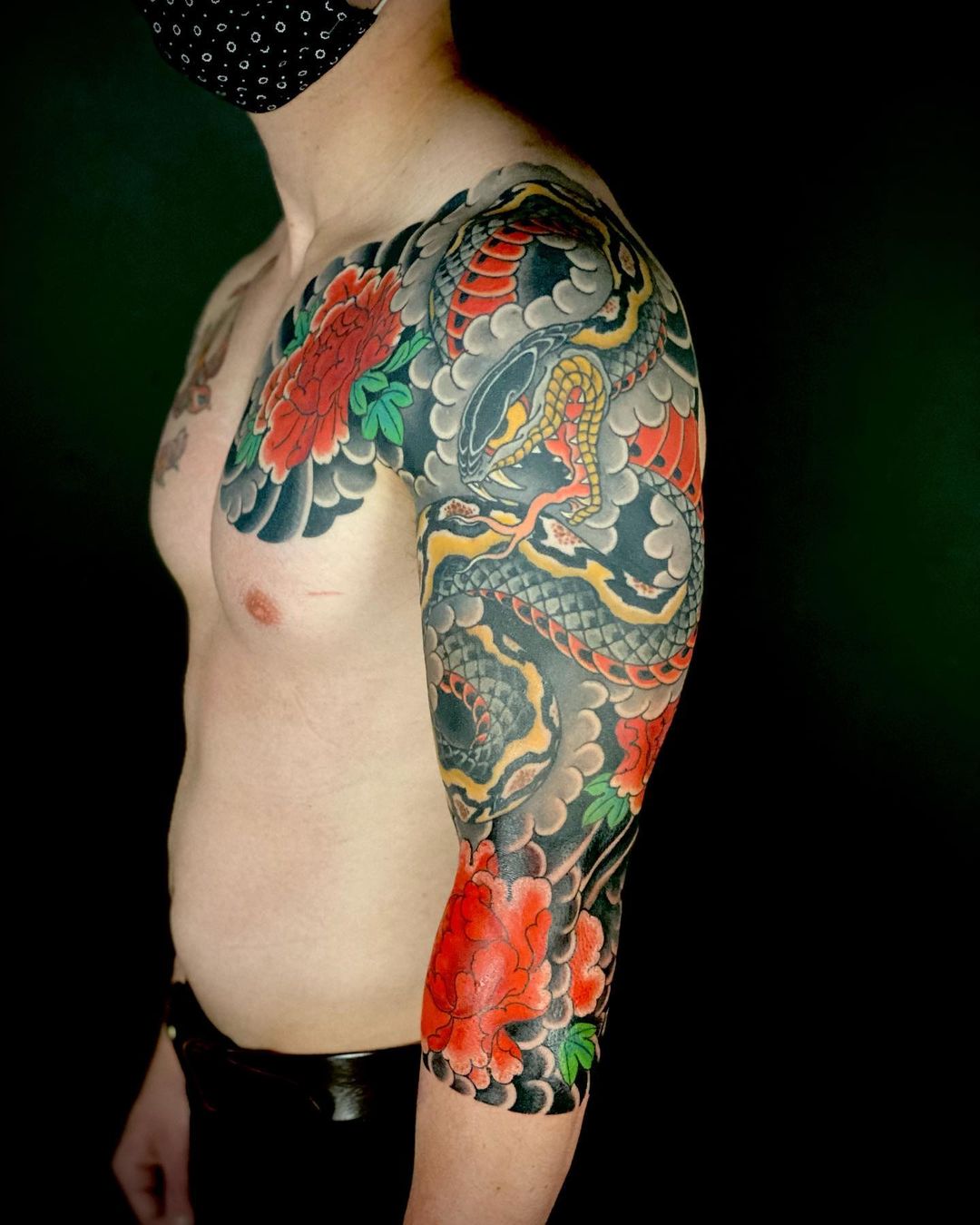
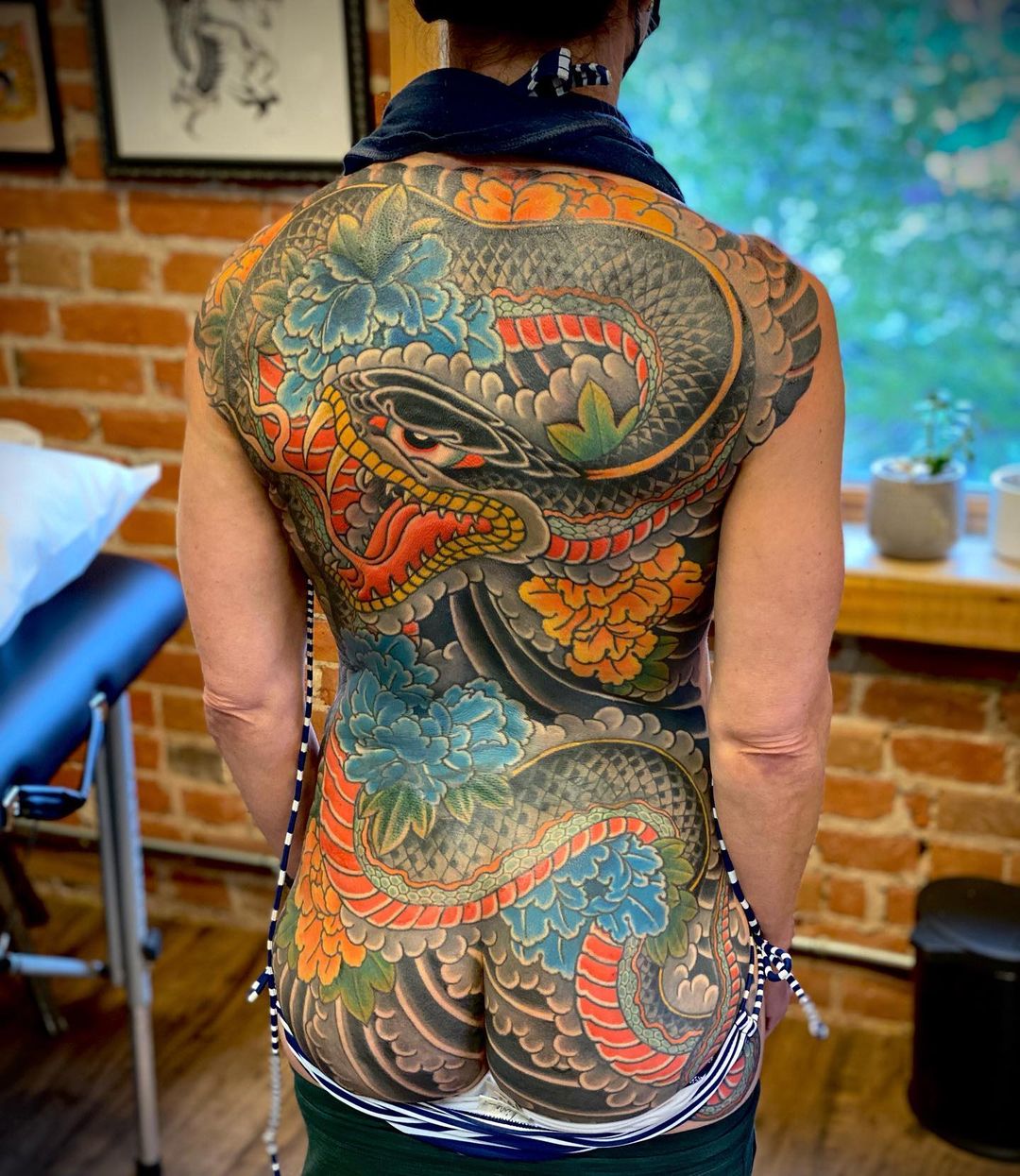
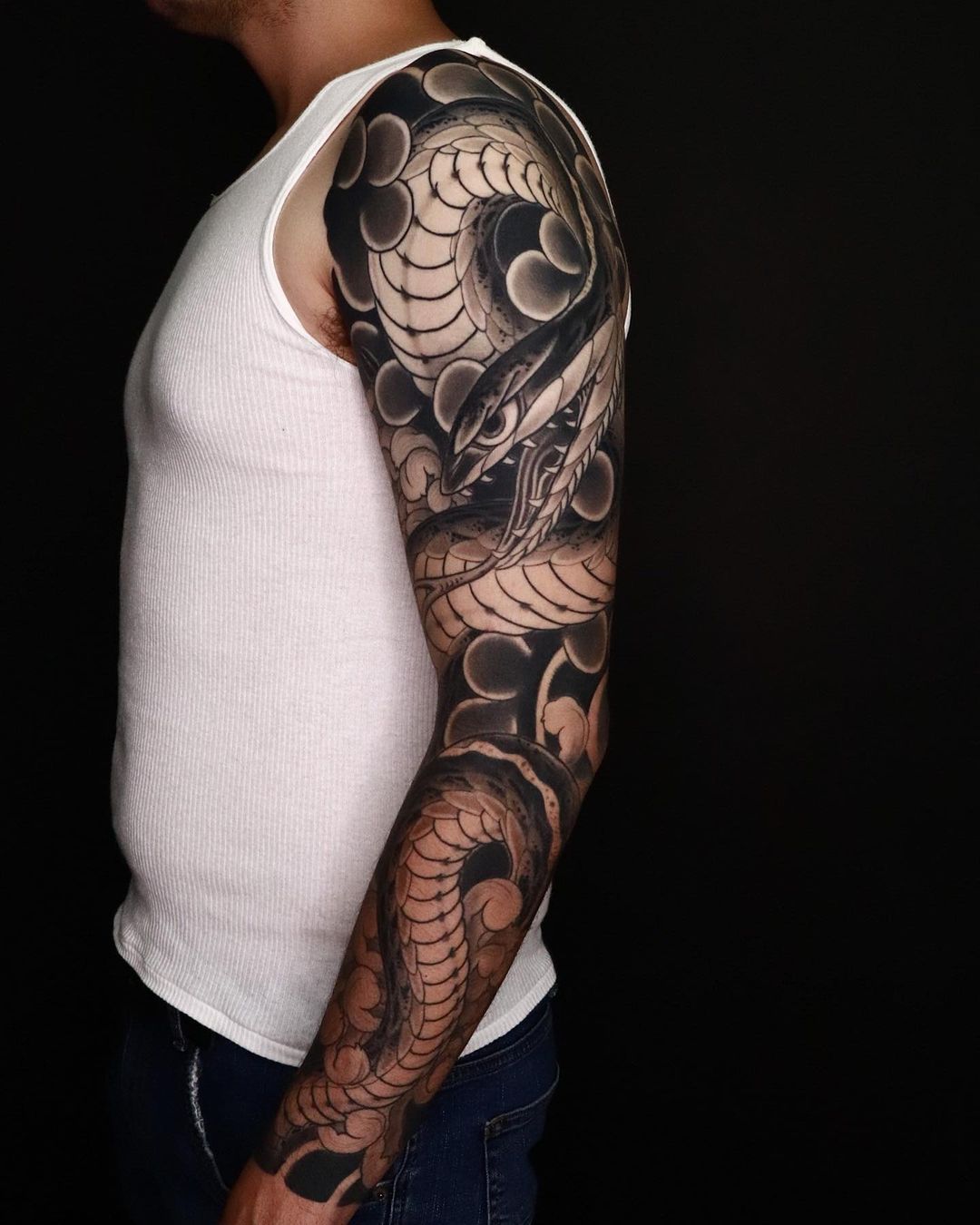
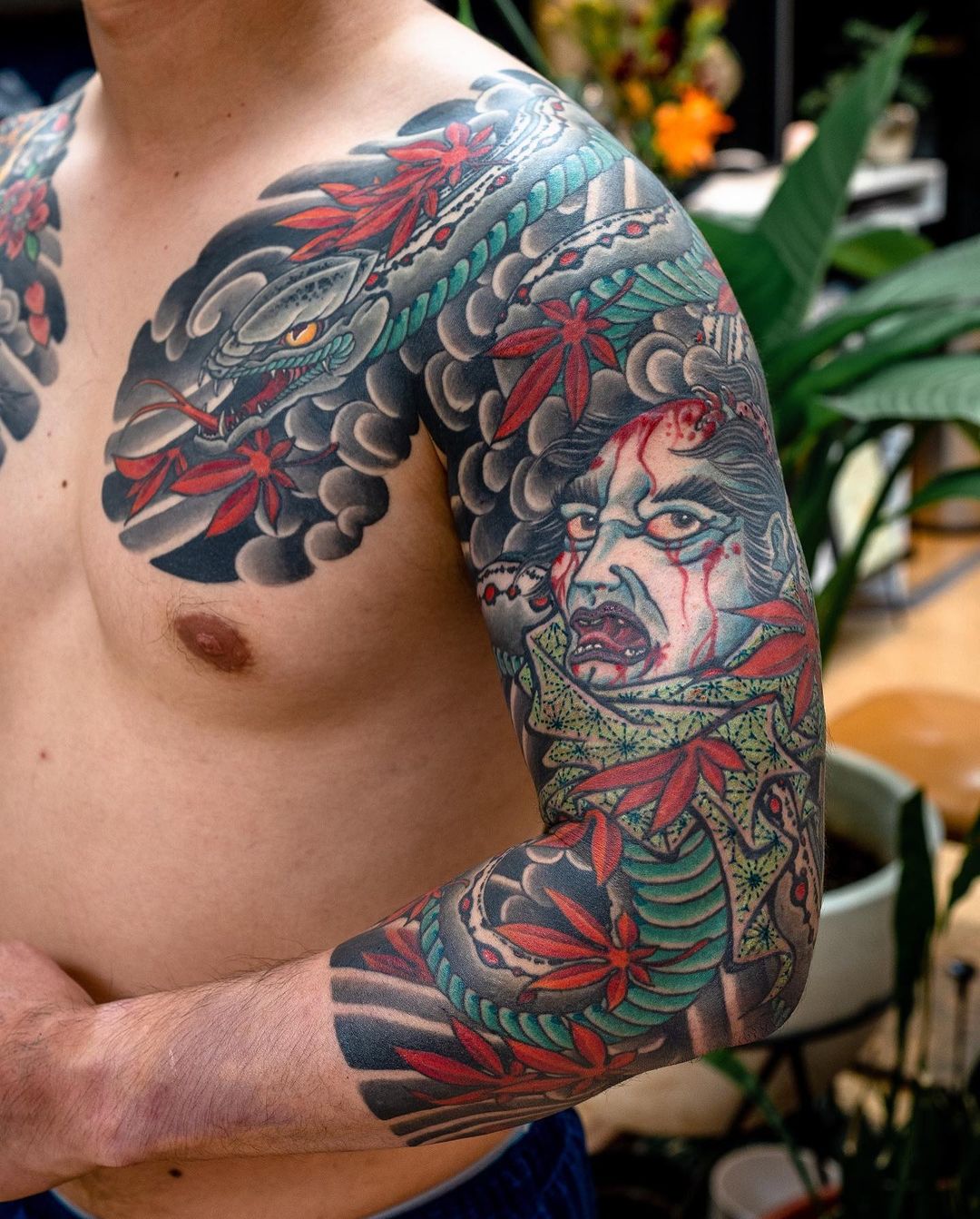
Phoenix
Phoenix or Hōō is a symbol of a good omen in Japanese culture. It is associated with great luck and peace. According to the legend phoenix never causes harm to any living thing, it brings quiet, peace, and happiness to lands where it appears. It is also connected to the imperial household.

Samurai
Samurai is an honorable Japanese warrior. He lives his life according to the ethical code of bushido (“the way of the warrior”). The main characteristics of real samurai are loyalty to the master, honor, discipline, and respect.
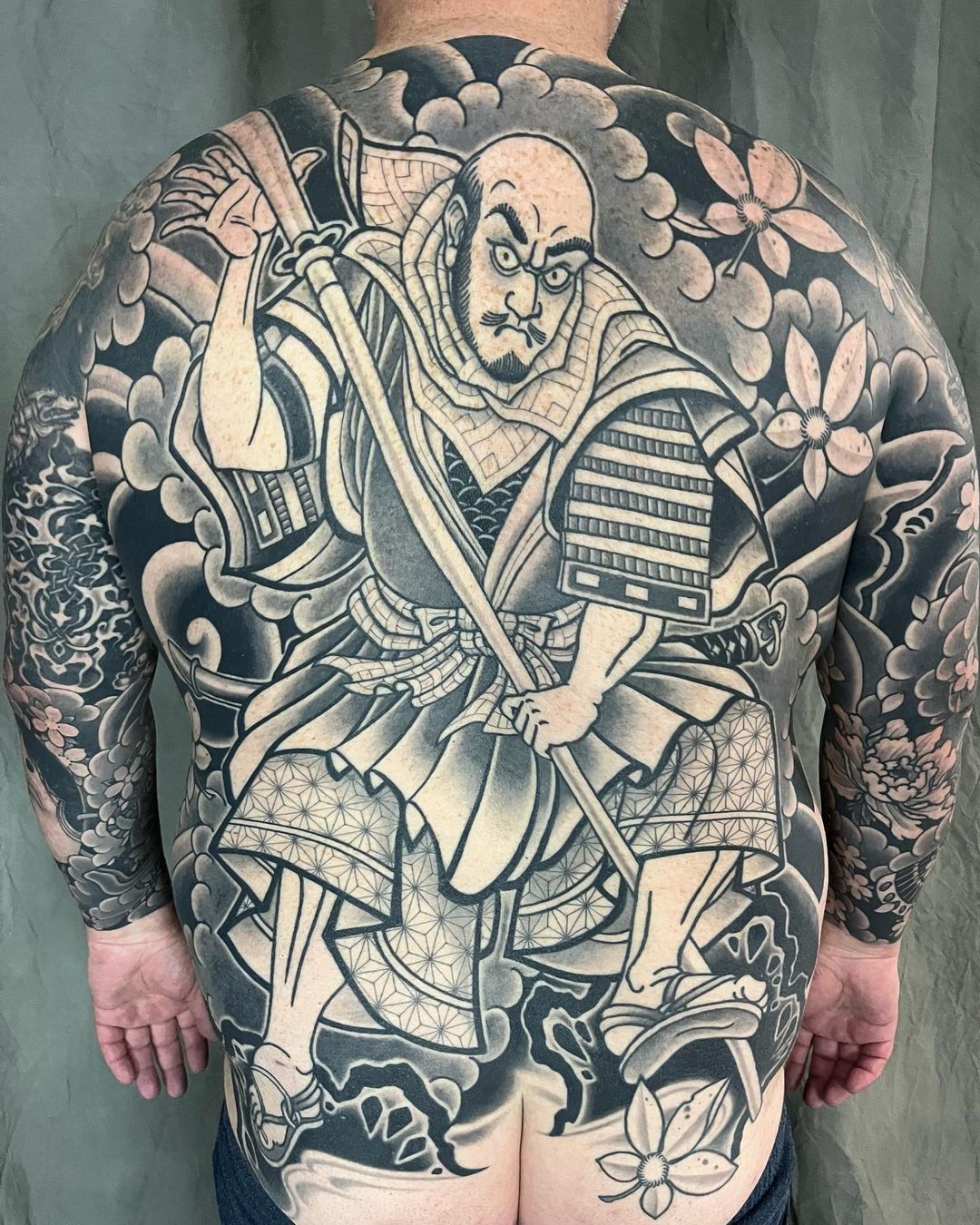
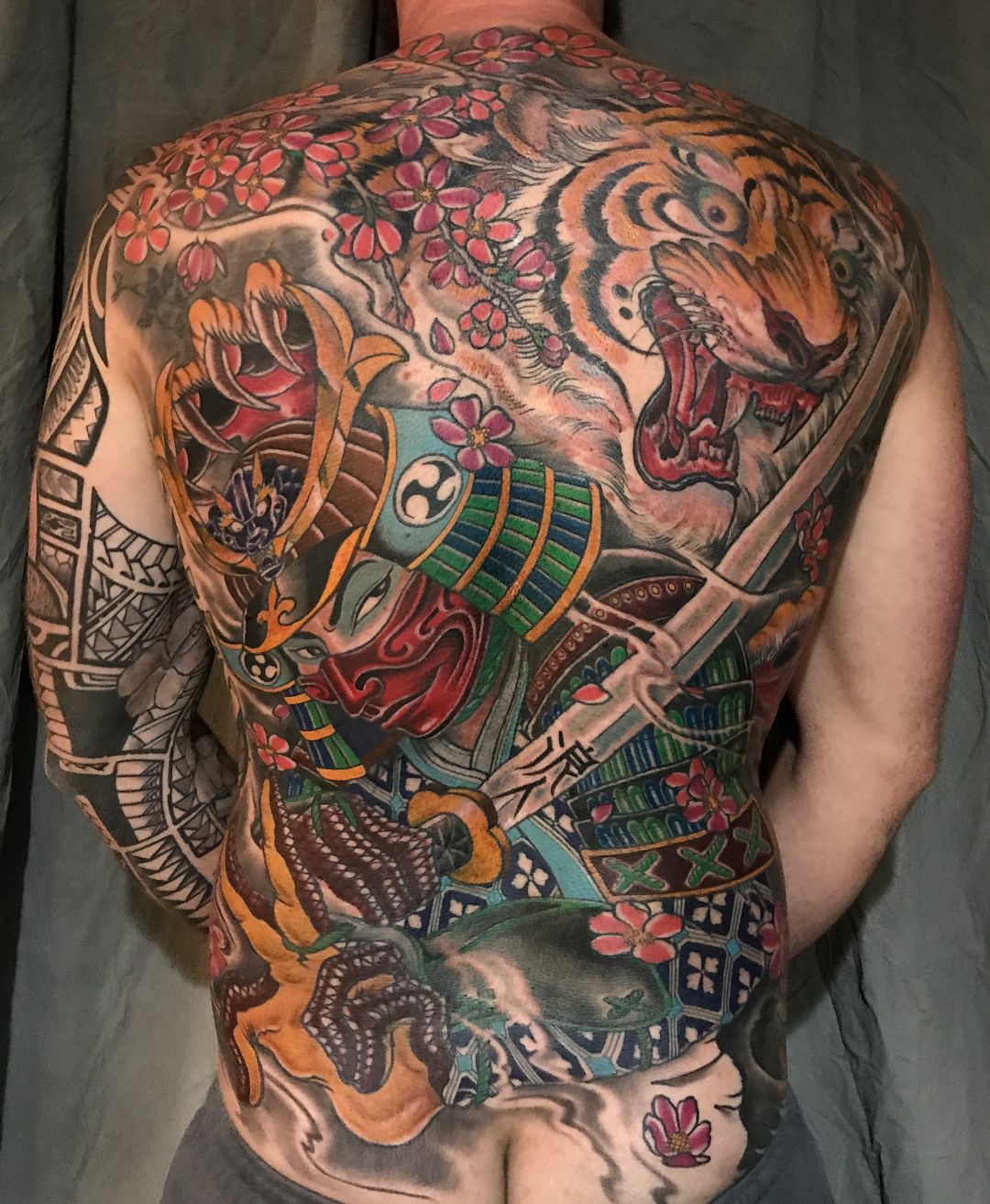
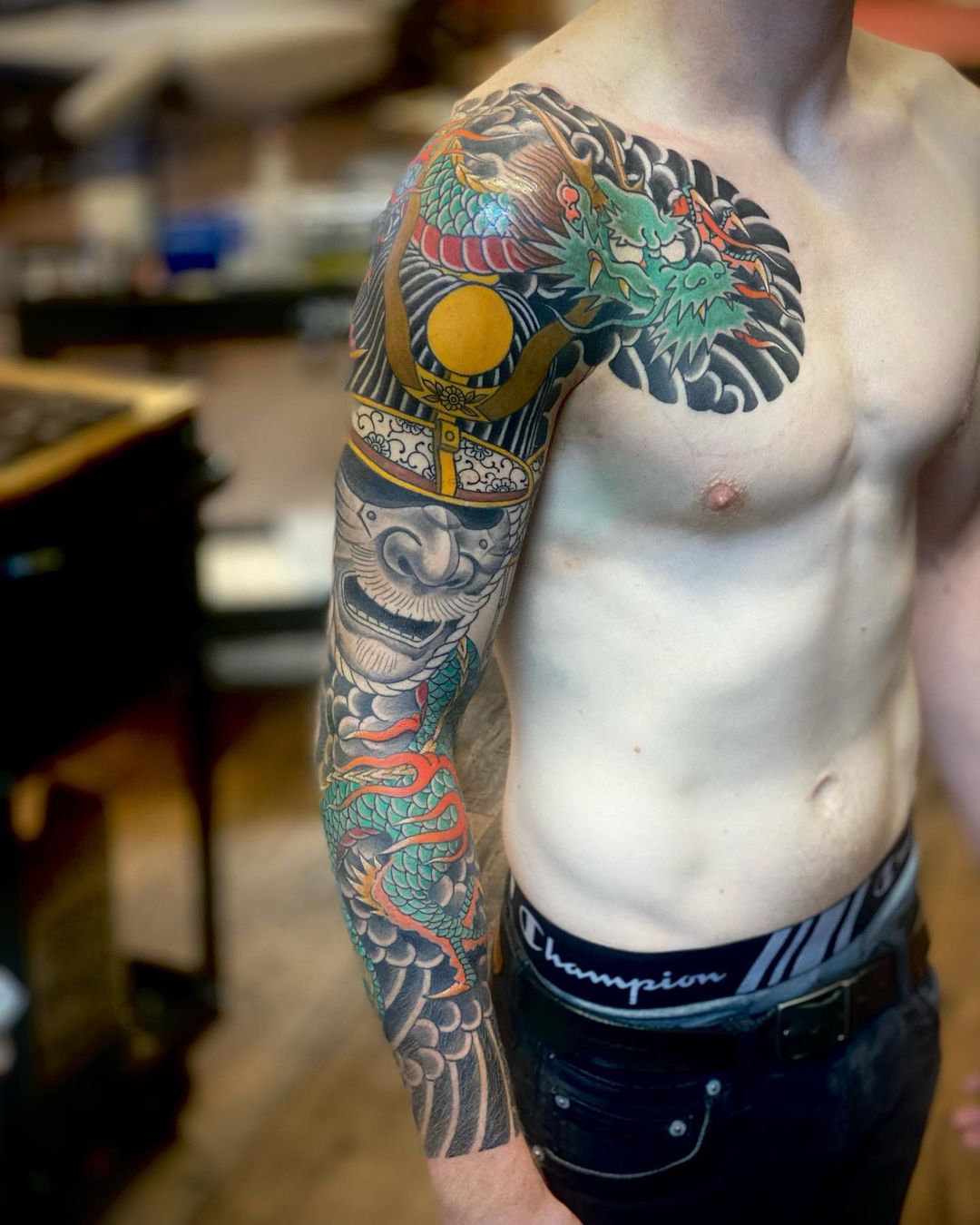
Summary
Yakuza tattoo has a long history, Developed from the marks of criminals Every element in the Yakuza tattoo has a powerful meaning in Japanese culture, traditions, or history.
While considering a yakuza-style tattoo for yourself, think about the story you want to tell through the pictures. In this article, we give you a very brief overview of each symbol, but we encourage you to research deeper. Contact a tattoo artist, who is specialized in Japanese tattoos. Discuss your ideas to avoid neglection of Japanese culture and symbols’ original meaning.
FAQ
? Is It Ok To Have a Yakuza Tattoo?
Yes, you can get a traditional yakuza tattoo. Yakuza doesn’t use tattoos to identify their members, so you won’t run into trouble. These tattoos are personal and based on Japanese legends, symbolism, and art. However, in Japan there is a strong stigma against tattoos, so you might not be able to enter some public places with visible body art.
⏱️ How Long Does It Take To Make a Bodysuit Yakuza Tattoo?
With the traditional method of inking, it takes around a year of weekly sessions to create a bodysuit. The tattooing machine makes the process faster, but the estimated time is 100+ hours.
? How Expensive Is a Yakuza Tattoo?
A half bodysuit has an estimated cost of around $40 000 – $50 000, while pricing for covering the whole body reaches $100 000. Getting a tattoo from a professional horishi tattoo artist will cost even more because it takes more time to make art and require more professionalism from the artist.
? What Is the Yakuza Tattoo Called?
Irezumi translates from Japanese as “inserting ink’.
? Why Do the Yakuza Cover Themselves in Tattoos?
Originally, Yakuza get tattoos as a rebellion against the government because tattoos were used as a punishment for criminals. With time it has become a tradition and the develop its own style of themes of tattooing. Nowadays, it is used to show one’s commitment to the gang.


